ANSYS MECHANICAL NỀN TẢNG
TỔNG QUAN KHÓA HỌC ANSYS MECHANICAL NỀN TẢNG
- Khóa học có tổng thời lượng 100h, diễn ra trong 9 tuần, bao gồm 14 bài giảng lý thuyết, 50 bài tập thực hành và 1 buổi kiểm tra cuối khóa. Các bài tập thực hành về các ứng dụng vào các lĩnh vực thực tế như xe hơi, máy bay, xây dựng, cầu đường, chế tạo máy, truyền nhiệt.
- Khóa học sẽ trang bị cho học viên những kiến thức nền tảng cả về lý thuyết lẫn thực hành. Học viên sẽ nắm được chức năng sử dụng và thực hành sử dụng các mô đun chính của Ansys Workbench như static structural, transient structural, explicit dynamics, modal analysis, buckling, harmonic analysis, thermal analysis, and multi-body system.
- Học viên sẽ làm chủ phần mềm Spaceclaim để dựng, chỉnh sửa mô hình 3D.
- Học viên sẽ biết cách chuẩn bị mô hình Solid, Line and Surface bodies cho bài toán mô phỏng.
- Học viên sẽ nắm chắc các kỹ thuật chia lưới và đánh giá chất lượng lưới của mô hình.
- Học viên sẽ nắm được cách thiết lập điều kiện biên, liên kết và tải trọng cho mô hình.
- Học viên sẽ biết cách xây dựng các mô hình vật liệu phi tuyến, tiếp xúc phi tuyến và biến dạng phi tuyến. Biết thiết lập và sử dụng mô hình vật liệu như kim loại, bê tông, nhựa.
- Học viên sẽ biết cách kết hợp các mô đun của Ansys Mechanical với nhau.
- Học viên sẽ nắm chắc được các lý thuyết bền và công cụ để đánh giá kết quả đầu ra của mô hình: Ứng suất, biến dạng, phản lực.
- Từ đó, học viên sẽ nắm chắc được cách xây dựng và hiệu chỉnh mô hình sản phẩm; lựa chọn các mô đun trong phần mềm phù hợp với bài toán cần mô phỏng; nắm chắc các bước để mô phỏng một bài toán; thành thạo cách thiết lập các thông số đầu vào, đánh giá kết quả đầu ra bằng phần mềm Ansys Mechanical.
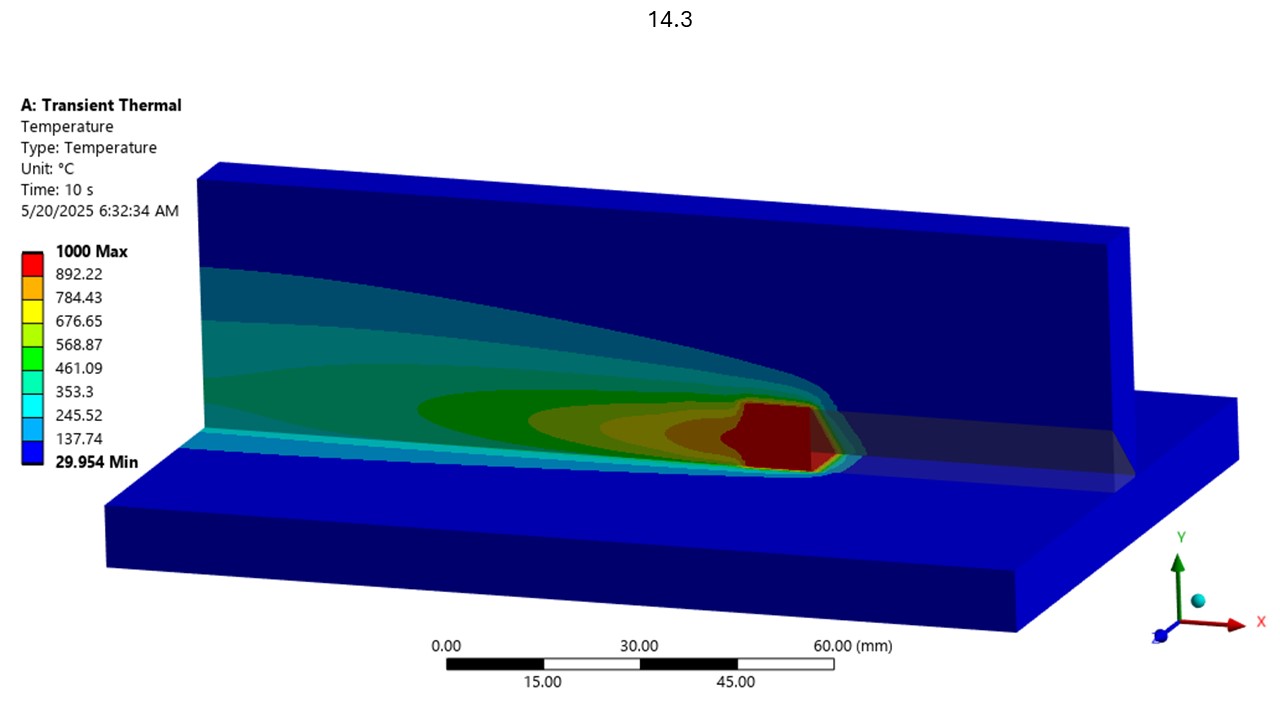
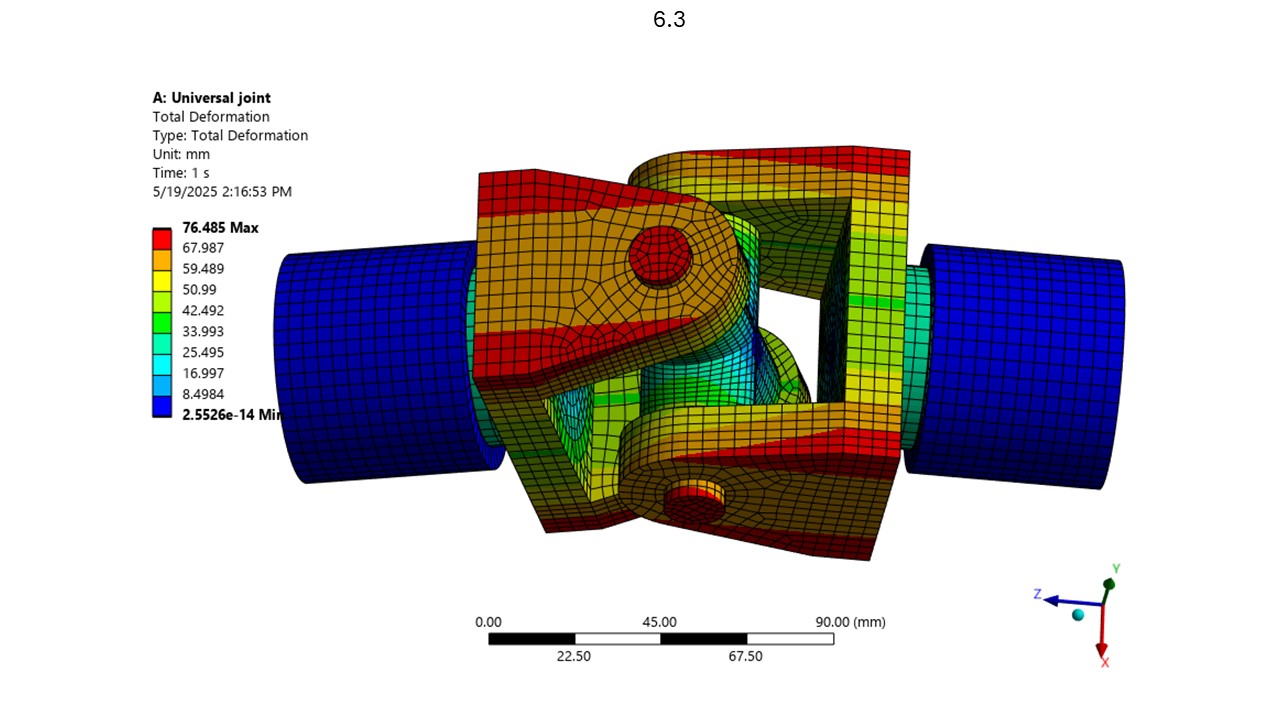
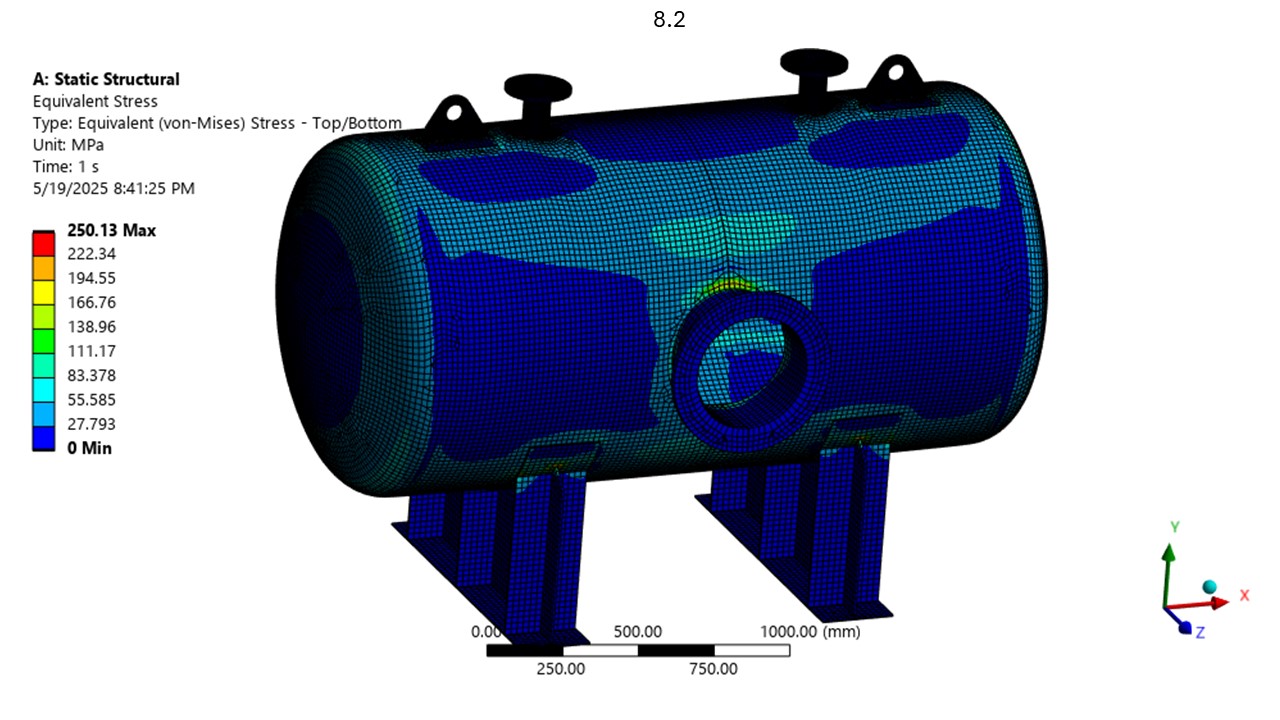
NỘI DUNG KHÓA HỌC
- Lĩnh vực ứng dụng của Ansys Workbench
- Giao diện tổng quan của Ansys Workbench
- Các mô đun mô phỏng: Static structural, transient structural, explicit dynamics, rigid dynamics, steady state thermal, transient thermal, modal analysis, harmonic response.
- Các bước mô phỏng trong Ansys Workbench
Static analysis and dynamic analysis of the spring mass system.

Space Claim là phần mềm dựng hình và hiệu chỉnh mô hình được tích hợp với phần mềm ANSYS.
- Overview của Spaceclaim
- Dựng hình Sketch 2D, Line, Surface và Solid
- Hiệu chỉnh, chỉnh sửa mô hình
- Thiết kế ngược – Reverse engineering
Việc hiểu được bản chất của các lý thuyết tính bền là vô cùng quan trọng trong việc đánh giá kết quả ứng suất của bài toán mô phỏng. Sau khi có kết quả, người sử dụng Ansys có thể khẳng định về mặt lý thuyết là kết cấu của mình có đảm bảo tin cậy hay không.Nội dung lý thuyết bền và hệ số an toàn bao gồm:
1. Các loại ứng suất: Normal, shear, principal, equivalent và stress intensity.
2. Lý thuyết bền sử dụng cho vật liệu dẻo:
Thuyết bền Maximum Shear Stress (ứng suất tiếp cực đại).
Thuyết bền Maximum Distortion Energy – Von Mises (thế năng biến đổi hình dáng cực đại)
Thuyết bền Ductile Coulomb Mohr
3. Lý thuyết bền sử dụng cho vật liệu giòn:
Thuyết bền Maximum Principal Stress (ứng suất pháp lớn nhất)
Thuyết bền Brittle Coulomb Mohr
Thuyết bền Modified Brittle Coulomb Mohr
4. Áp dụng các lý thuyết bền trong phần mềm ANSYS để tính hệ số an toàn.
- Thuyết bền Maximum Shear Stress (ứng suất tiếp cực đại).
- Thuyết bền Maximum Distortion Energy – Von Mises (thế năng biến đổi hình dáng cực đại)
- Thuyết bền Ductile Coulomb Mohr
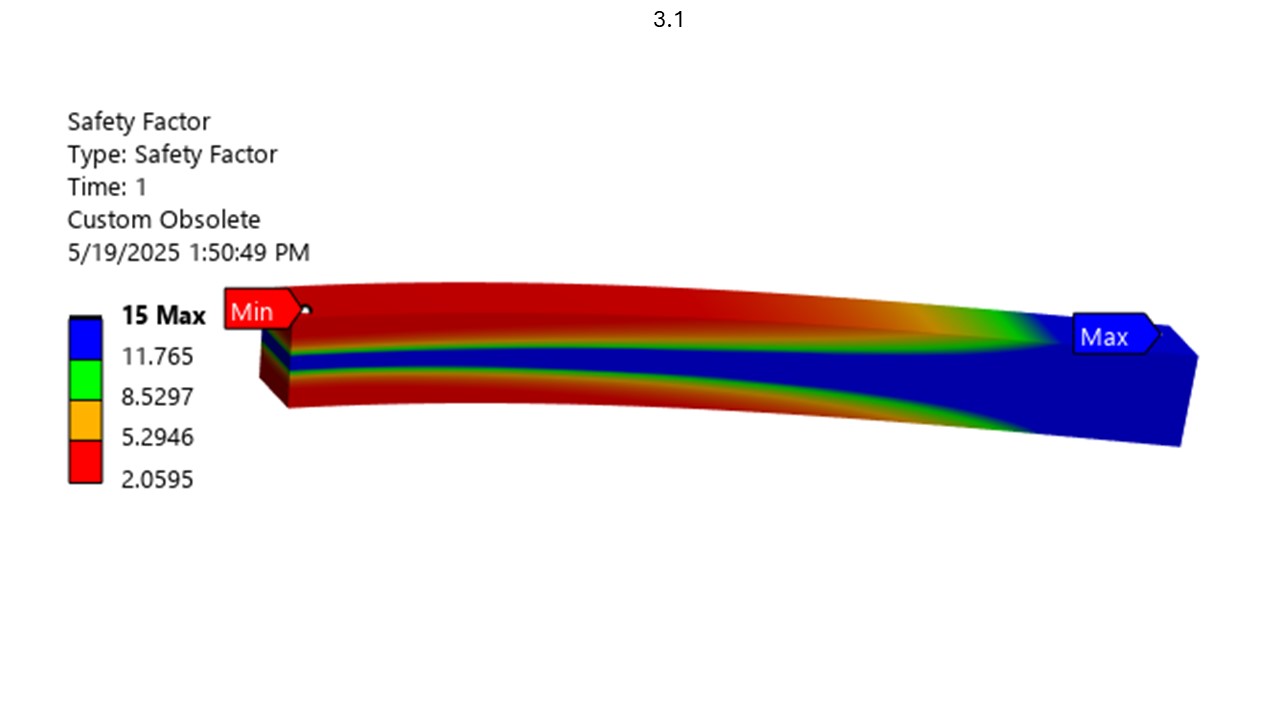
Thuyết bền Maximum Principal Stress (ứng suất pháp lớn nhất)
Thuyết bền Brittle Coulomb Mohr
Thuyết bền Modified Brittle Coulomb Mohr
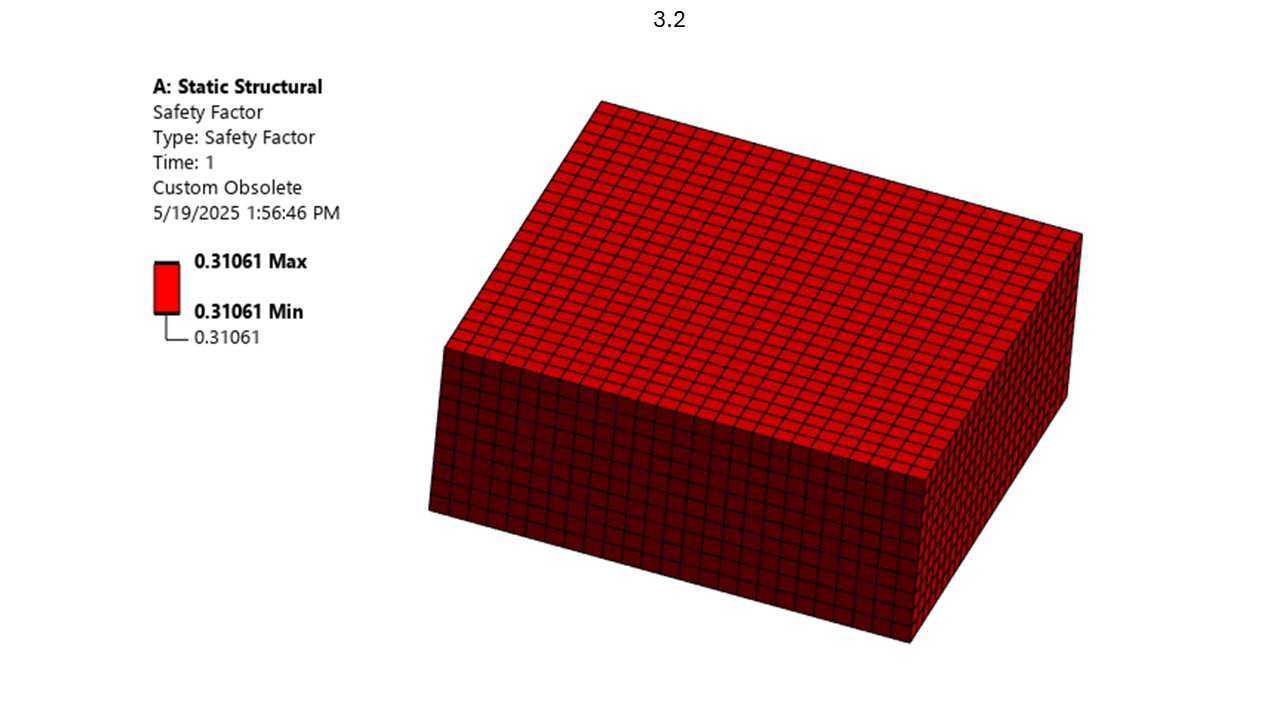
- Giới thiệu Engineering data: Chọn vật liệu + Thêm thông số vật liệu.
- Cơ tính cơ bản của các loại vật liệu: Vật liệu dẻo, vật liệu dòn, vật liệu siêu đàn hồi.
- Mô hình vật liệu tuyến tính, vật liệu phi tuyến tính.
- Các đặc điểm cơ tính, nhiệt tính cho các loại mô phỏng: Static linear, nonlinear, modal, transient, explicit dynamics, thermal, thermal transient, fatigue, thermal-structure.
- Các thư viện vật liệu dùng cho các mô đun mô phỏng.
- Thực hành trực tiếp trên phần mềm:
- Cách đưa các loại vật liệu từ thư viện ra.
- Cách thiết lập, thay đổi thông số vật liệu.
- Cách tạo và thiết lập thông số cho một vật liệu mới.
Bài tập này hướng dẫn mô phỏng quá trình thử kéo vật mẫu bằng thép:
– Sử dụng phần mềm Excel chuyển đổi dữ liệu engineering stress-strain của thí nghiệm thành dữ liệu true stress-strain.
– Thiết lập mô hình vật liệu phi tuyến tính cho thép.
– Thiết lập điều kiện biên.
– Sử dụng công cụ name selection để xử lý kết quả mô hình.
– Thiết lập analysis setting cho mô phỏng phi tuyến tính.
– Xử lý kết quả trong Ansys.
– Xử lý kết quả trong Excel để so sánh đường cong ứng suất biến dạng đầu vào của thép với kết quả đầu ra.
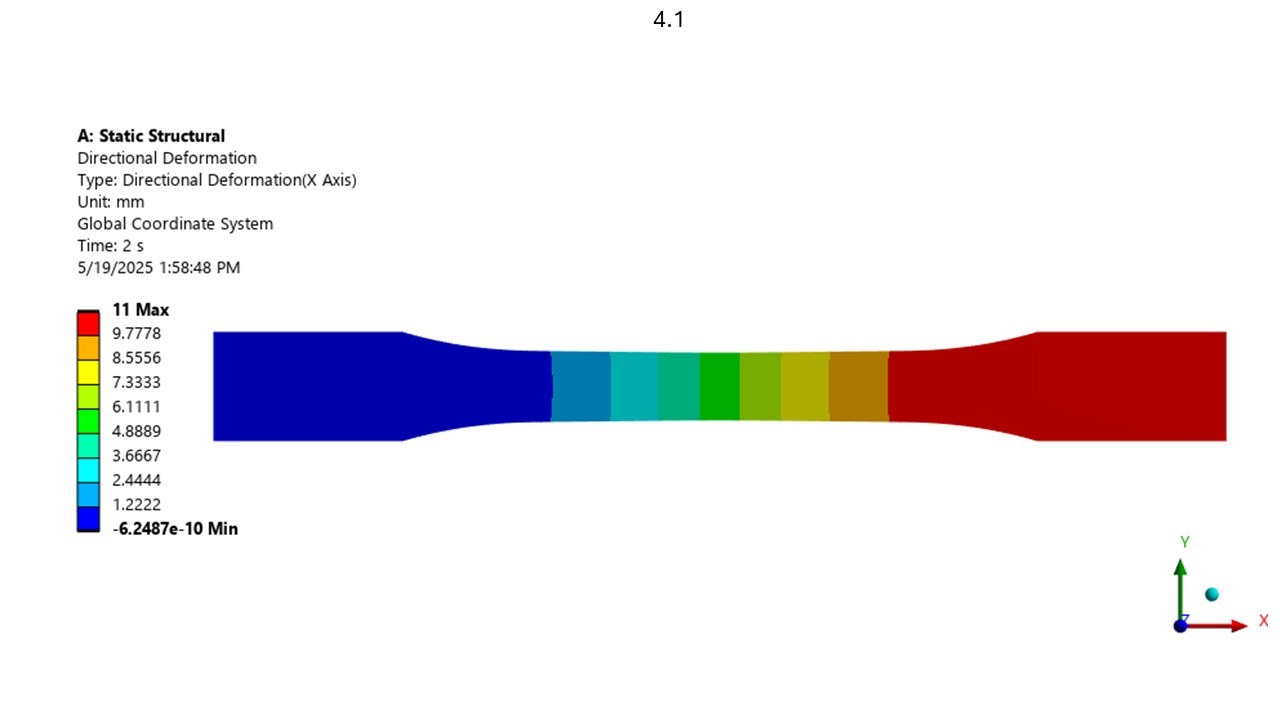
Một rubber spring được làm từ vật liệu cao su. Mục đích của bài này là tính độ lớn của lực lò xo phụ thuộc và biến dạng theo chiều thẳng đứng. Những nội dung sẽ học được trong bài tập này:
-Cách lấy các loại vật liệu Hyperelastic Materials từ thư viện.
-Thiết lập thông số của một vật liệu Hyperelastic mới từ kết quả thí nghiệm
-Thiết lập đồ thị lực phụ thuộc vào biến dạng.
-So sánh các loại vật liệu khác nhau.
-Mô hình vật liệu phù hợp cho biến dạng tỉ lệ được lựa chọn dựa theo bảng dưới.
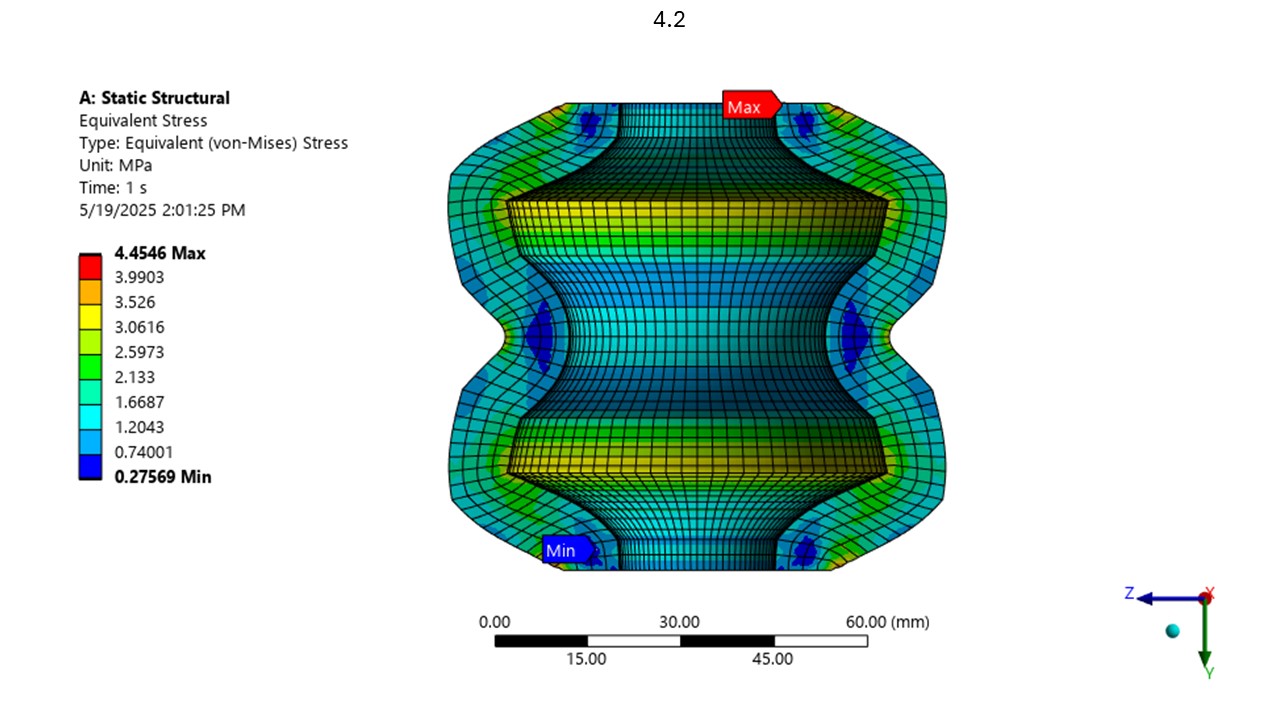
Bài tập này sẽ mô phỏng quá trình uốn bê tông cốt thép 3 điểm. Nội dung bao gồm:
-Xây dựng mô hình vật liệu phi tuyến cho bê tông sử dụng mô hình Menetrey-Willam
-Cách xây dựng mô hình bê tông cốt thép trong ansys
-Cách thiết lập mối liên kết bê tông và cốt thép
-Cách xây dựng các điều kiện biên để thực hiện quá trình uốn 3 điểm
– Sử dụng node selection để tạo điều kiện biên
-Thiết lập analysis setting cho mô phỏng phi tuyến tính
– Sử dụng công cụ Chart để dựng đồ thị Lực – Biến dạng trong quá trình uốn.
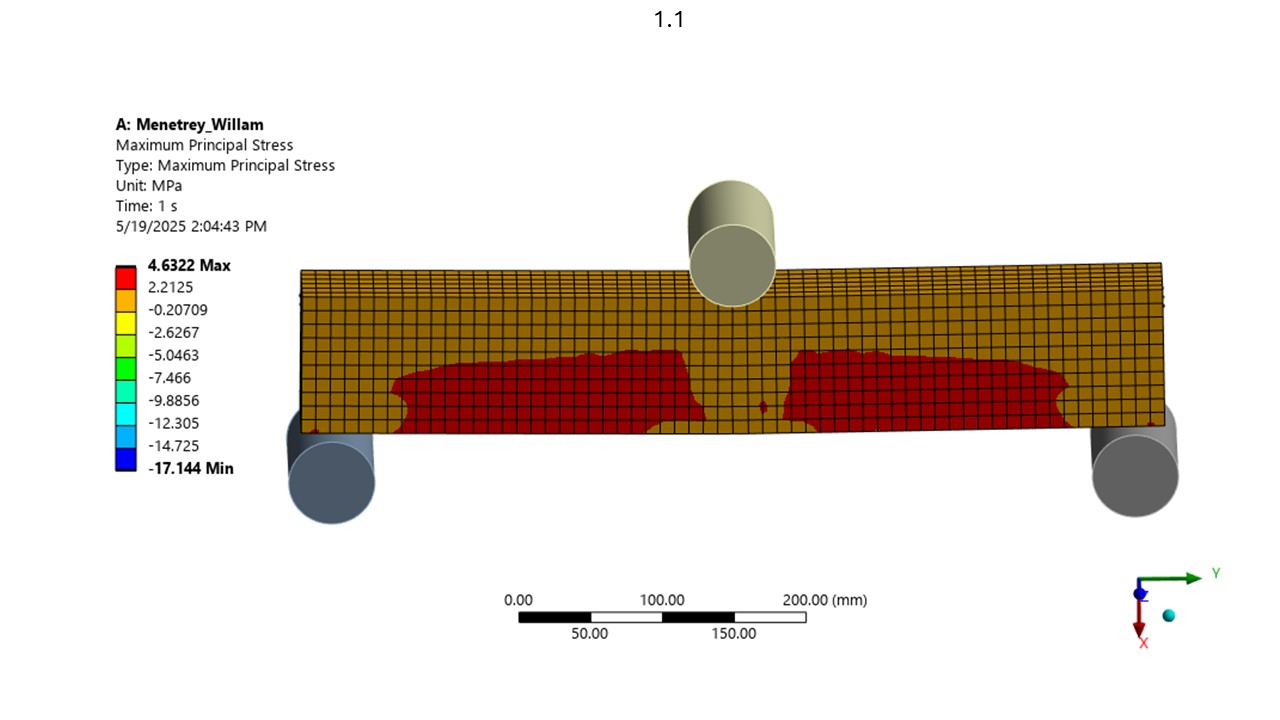
Phương pháp chia lưới ảnh hưởng đến độ chính xác kết quả, thời gian máy tính cần để thực hiện mô phỏng.Nội dung phần chia lưới bao gồm:
- Tổng quan về chia lưới
- Các phương pháp chia lưới.
- Chia lưới tổng quát.
- Chia lưới cục bộ.
- Đánh giá chất lượng lưới.
- Các thông số về lưới của mô hình.
Trong bài tập này, chúng ta sẽ thực hành:
1. Áp dụng các phương pháp chia lưới khác nhau, lựa chọn các phương pháp chia lưới để phù hợp với các mô hình khác nhau:
- Automatic.
- Tetra patch conforming.
- Tetra patch independent.
- Multizone.
- Sweep.
2. Thực hành chia một body thành multi-body part, để các bodies trong cùng một part có thể chia luới bằng Sweep method.
3. Cách xem các thông số mesh quality
4. Cách hiệu chỉnh các biểu đồ của thông số mesh quality
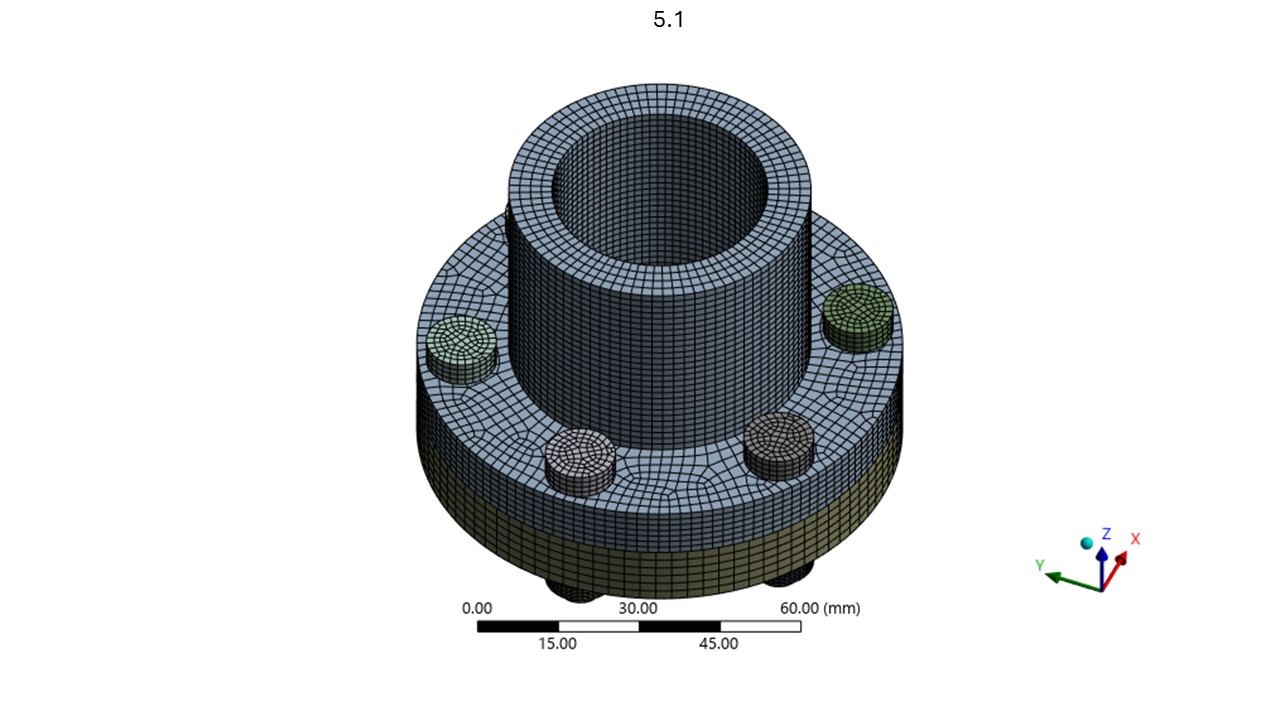
Thực hiện chia lưới sử dụng Global mesh control:
- Display
- Default
- Sizing
- Quality
- Inflation
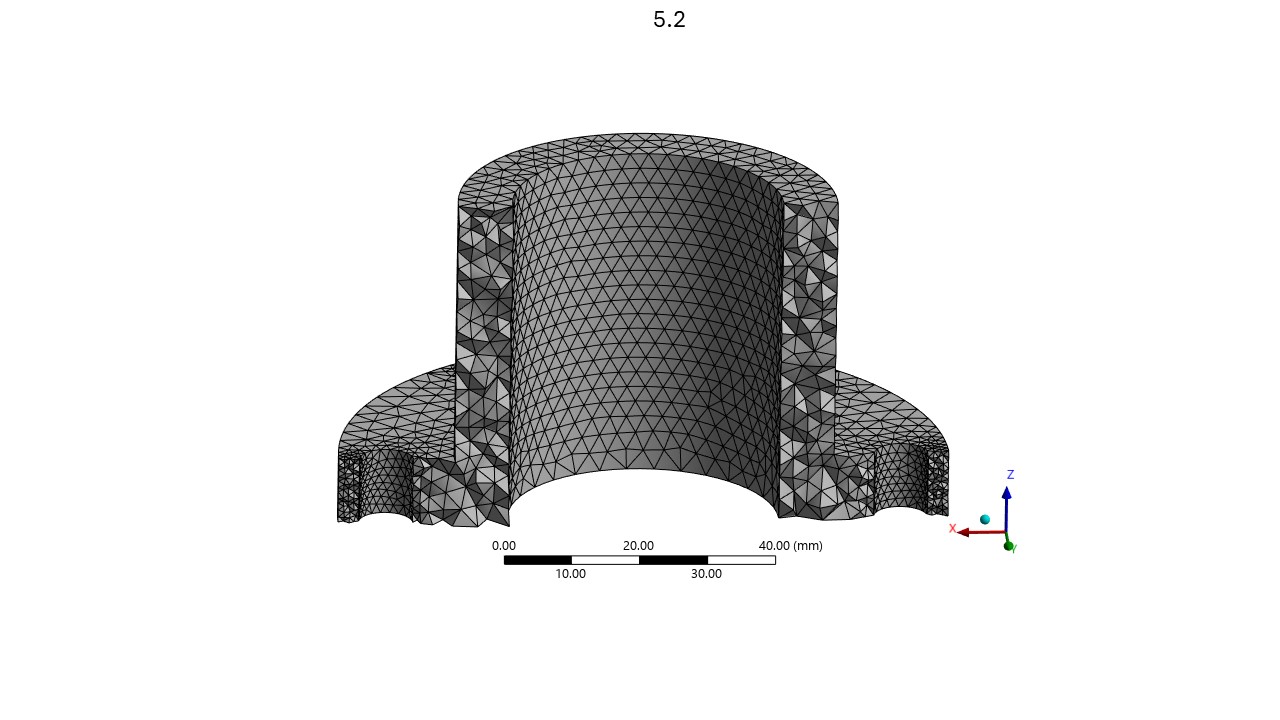
Thực hiện chia lưới sử dụng Local mesh control:
- Display
- Default
- Sizing
- Quality
- Inflation
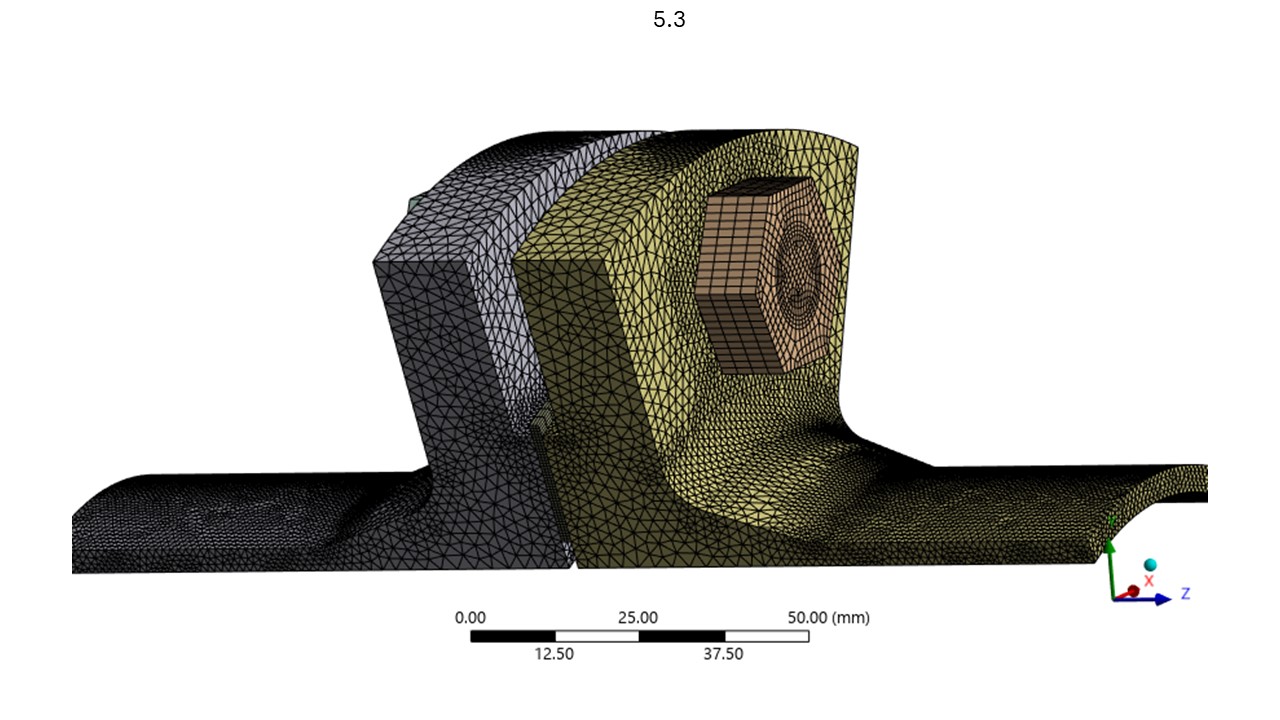
Các nội dung chính:
- Chia một unsweepable part thành sweepable multibody part để áp dụng được sweep method cho các bodies.
- Share topology giữa các bodies trong cùng một part. (chia sẽ các mặt, cạnh chung của các bodies trong cùng một part).
- Sử dụng các kỹ thuật chia lưới: Body sizing, face sizing, edge sizing, sweep method, multizone method, face meshing.
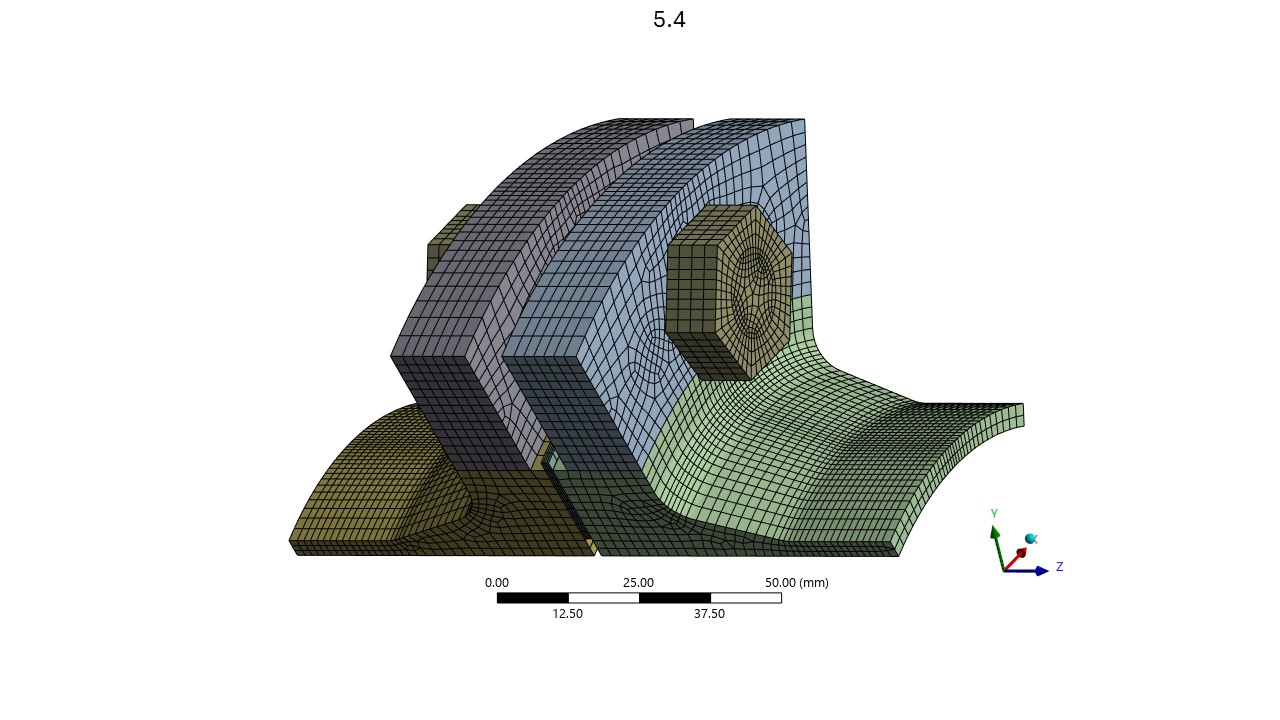
Đây là bước quan trọng nhất của bài toán mô phỏng bởi vì kết quả mô phỏng có chính xác hay không phụ thuộc rất lớn vào việc thiết lập các mối liên kết và thông số đầu vào như điều kiện biên, thời gian, lực, áp suất, dịch chuyển và nhiệt độ…
- Boundary conditions: Fixed, displacement, remote displacement
- Loads: force, pressure, remote force, gravity, spring
- Contacts: Bonded, no-separation, rough, frictional, frictionless
- Joints: Universal, cylindrical, spherical, translational
Một giá treo (hanger) được cấu tạo từ một Bar (thanh xà ngang), một Pin (chốt) và một Head (đầu treo). Bar được cố định với tường (Wall) bằng 4 Bolt (bu lông), Head liên kết với Bar bởi Pin. Vấn đề: Tính toán kiểm bền các chi của giá treo. Yêu cầu đảm bảo bền: Đối với bu lông: Ứng suất danh nghĩa nhỏ hơn Proof strength; Đối với các chi tiết khác: Biến dạng tỉ lệ tương đương (Equivalent strain) nhỏ hơn 0,02.
Các nội dung chính:
- Thiết lập contacts giữa các chi tiết: Bonded, frictional.
- Thiết lập điều kiện biên.
- Thiết lập Loads: Bolt pretension, bearing force.
- Chạy mô phỏng với vật liệu tuyến tính.
- Chạy mô phỏng với vật liệu phi tuyến tính.
- Xuất kết quả và đánh giá ứng suất, biến dạng của các chi tiết.
- Xuất kết quả và đánh giá bolt pretension.
- Xuất kết quả stress linearization.
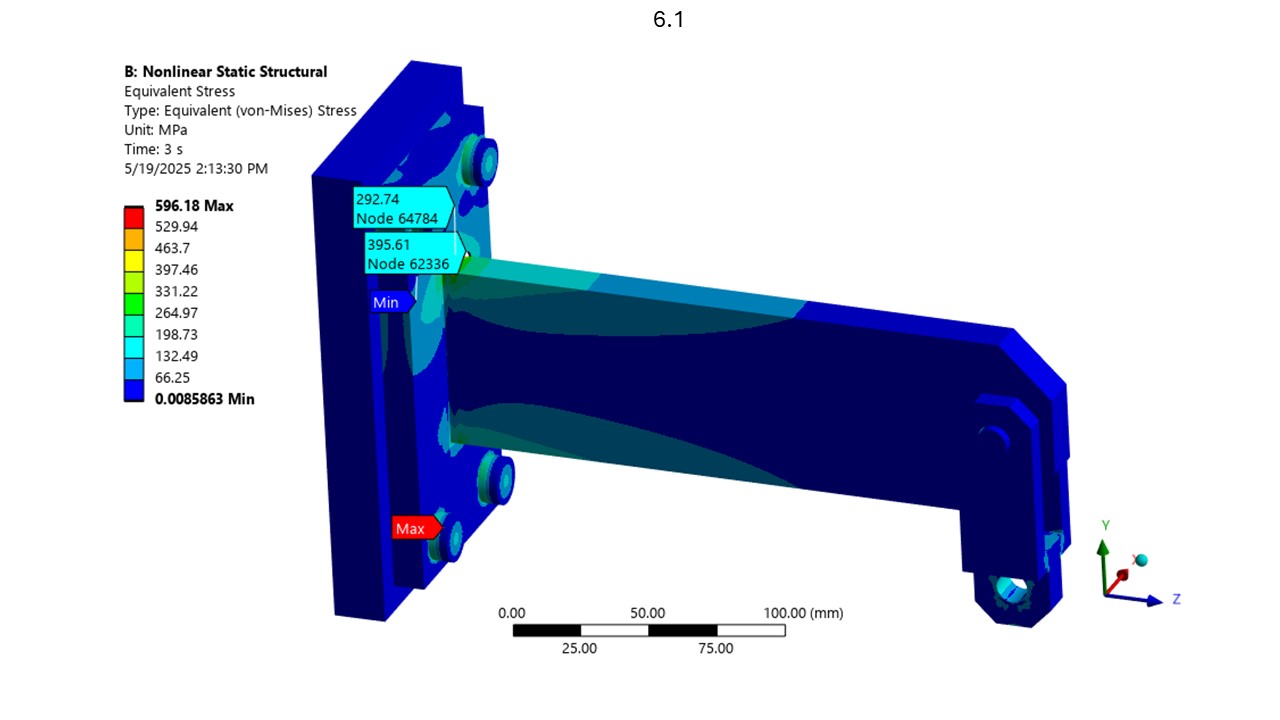
A flange connection consists of 3 parts: Flange, Mount and Bolts. In this exercise, all 4 bolts are missed, and they are replaced by 4 beam connections for the purpose of simplification.
The main purpose of this exercise is to instruct how to set up beam connections for bolted connections; how to set up remote force; and how to set up variable load dependent on time or coordinate system.
Các nội dung chính:
- Chia lưới.
- Thiết lập contacts giữa các chi tiết: Frictional.
- Thiết lập điều kiện biên.
- Thiết lập beam connection for bolts
- Thiết lập Bolt pretension of beams.
- Thiết lập variable loads depending on time and position: Remote force and pressure.
- Chạy mô phỏng.
- Xuất kết quả lực xiết bu lông.
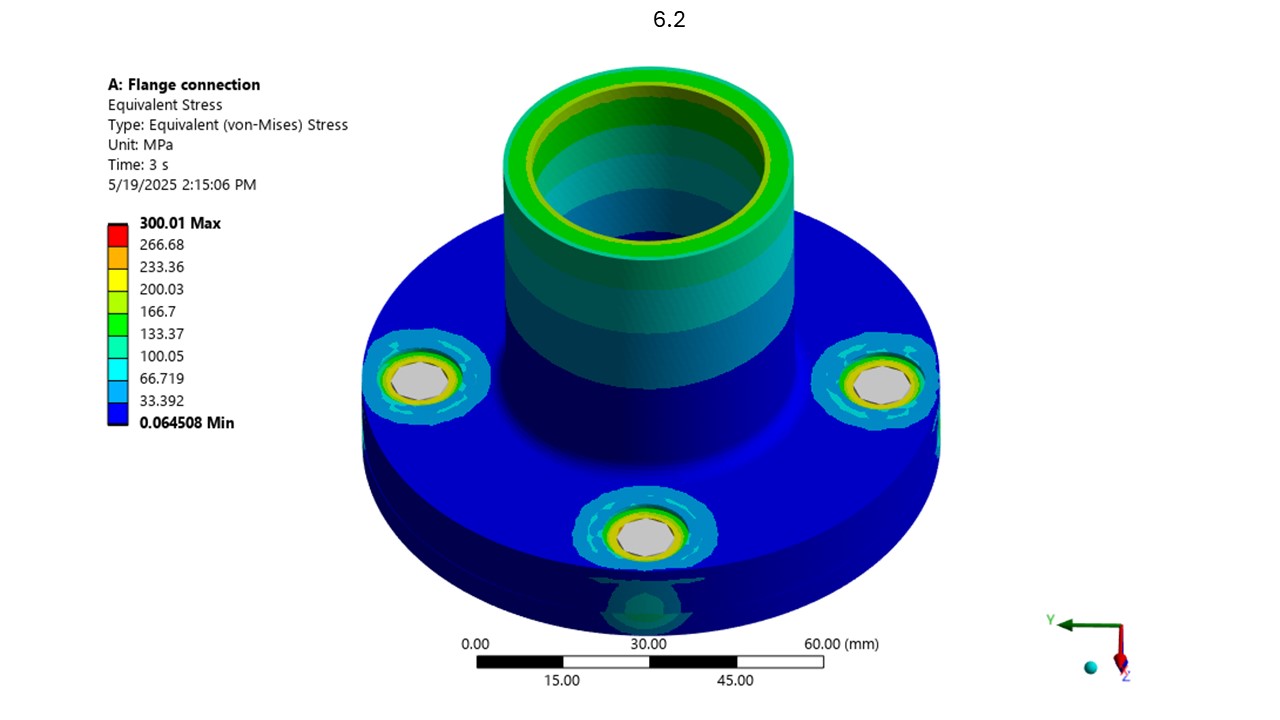
In this exercise, we will learn how to set up a universal joint using contact and joint connections.
- Set up mesh.
- Set up connections: Joints and contacts.
- Apply Joint loads.
- Run simulation.
- Extract and evaluate results.

This workshop will simulate how an O-ring is fitted between pistion and cylinder.
The model on the left is a full 3D model which consists of piston, O-ring and cylinder, this is axisymmetric around the axis OY.
To save time and computational resource, a 2D-axisymmetric model is created and used for simulation.
- Set up and run 2D-axisymmetric model
- Use hyperelastic material: Neoprene Rubber
- Set up nonlinear frictional contacts
- Extract contact pressure
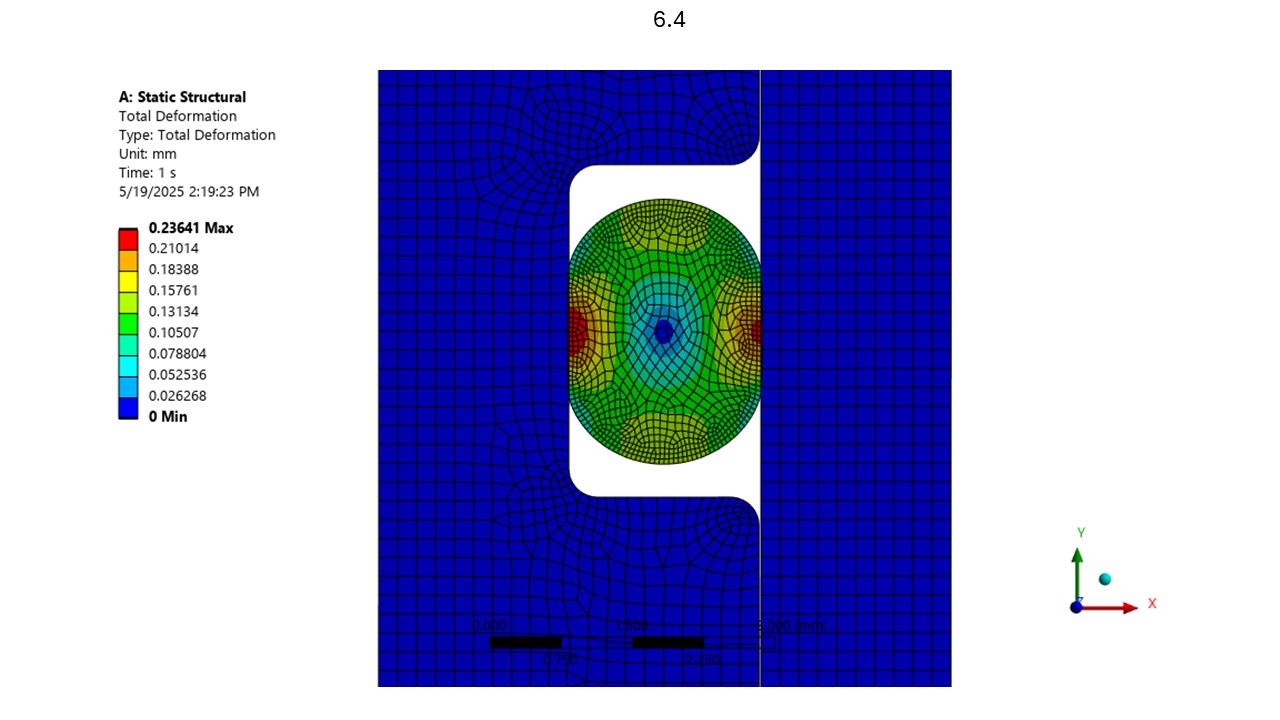
Đơn giản hóa mô hình bằng cách sử dụng các mô hình 2D simulation and 3D symmetry:
1. 2D simulation
- 2D plane-stress model
- 2D plane-strain model
- 2D axisymmetric model
2. 3D symmetry
- Cyclic symmetry
- Plannar symmetry
- Periodic symmetry
This workshop shows simulate how to set up cyclic symmetry of flange connection.
The model on the left is a full 3D model which consists of piston, O-ring and cylinder, this is symmetric around the axis. This model consists of 6 cyclic regions.
To save time and computational resource, a cyclic symmetric model is created and used for simulation.
- Set up and run cyclic symmetric model
- Apply bolt pretension
- Use mesh Match Control for cyclic symmetry
- Set up cyclic solution display
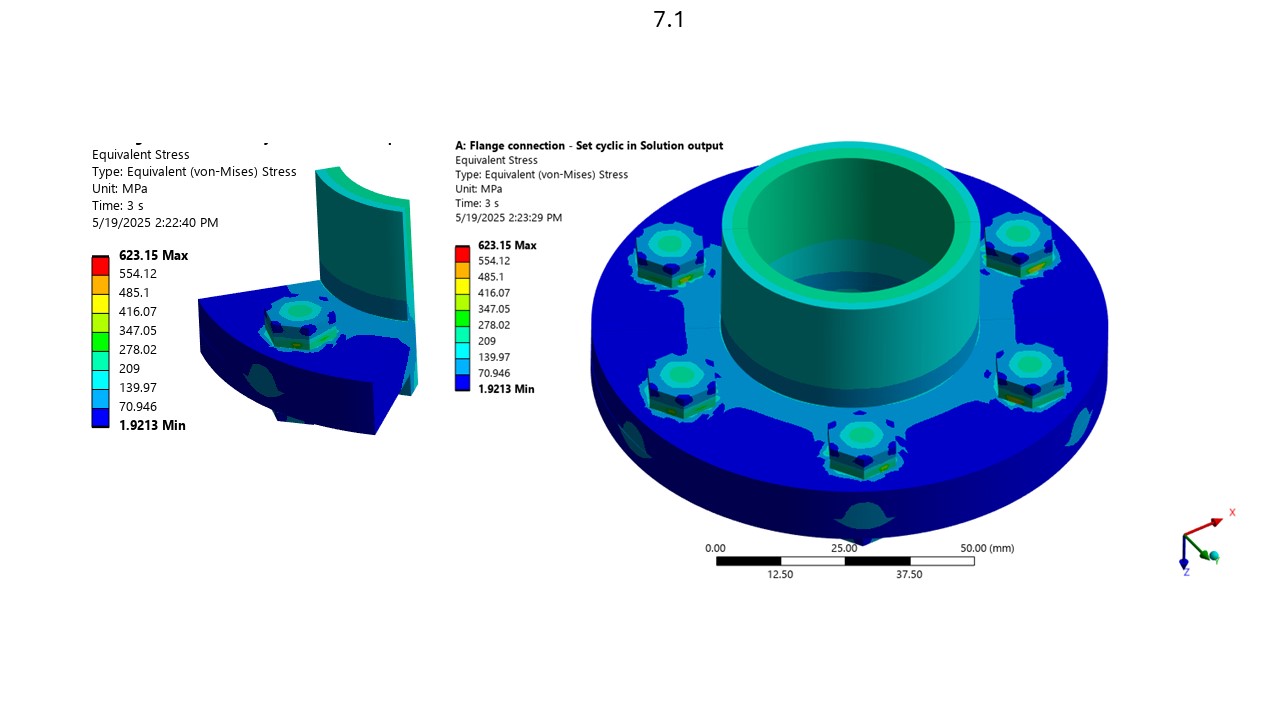
This workshop instructs how to set up planar symmetry of a beam under bending load. 3 models: full model, half model and quarter model are created and compared.
- Use shell for thin beam
- Utilize biased sizing of edge
- Set up planar symmetry for half model
- Set up planar symmetry for quarter model
- Compare results of three models
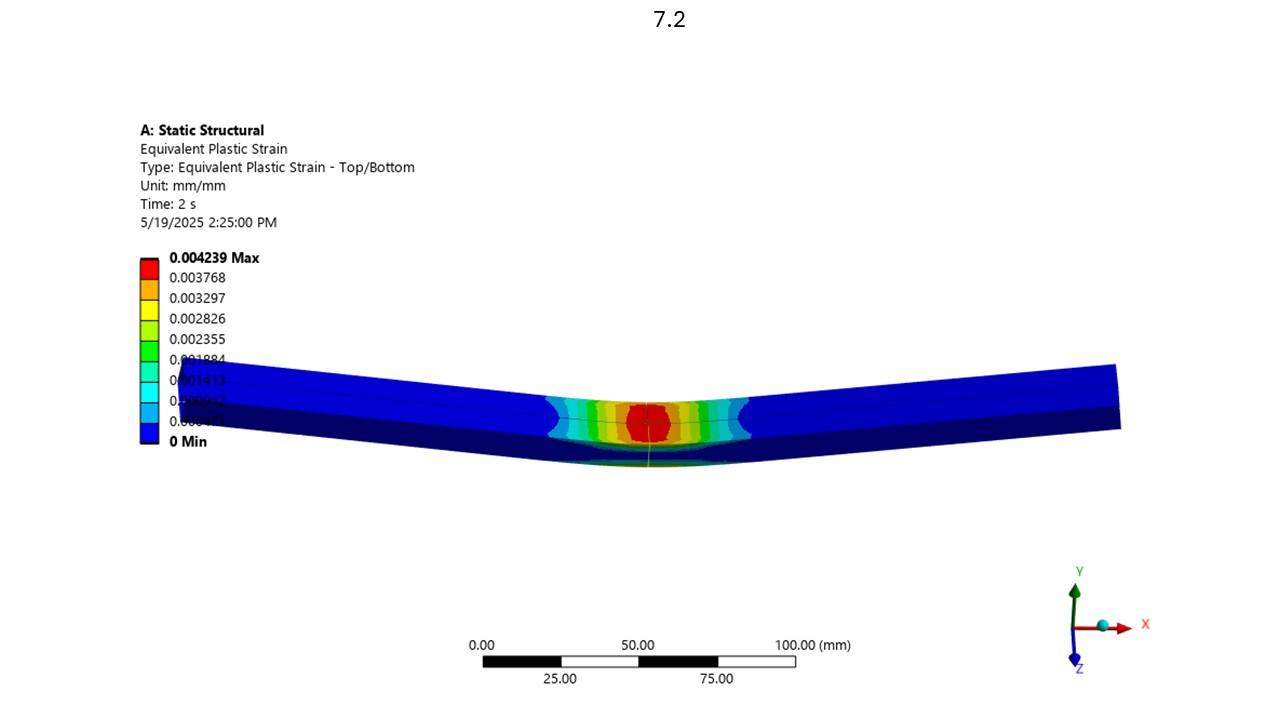
This workshop shows how to set up periodical symmetry of a periodical wall, and compare it to the full model.
- Set up and run periodical model
- Compare with full model
- Evaluate sesults
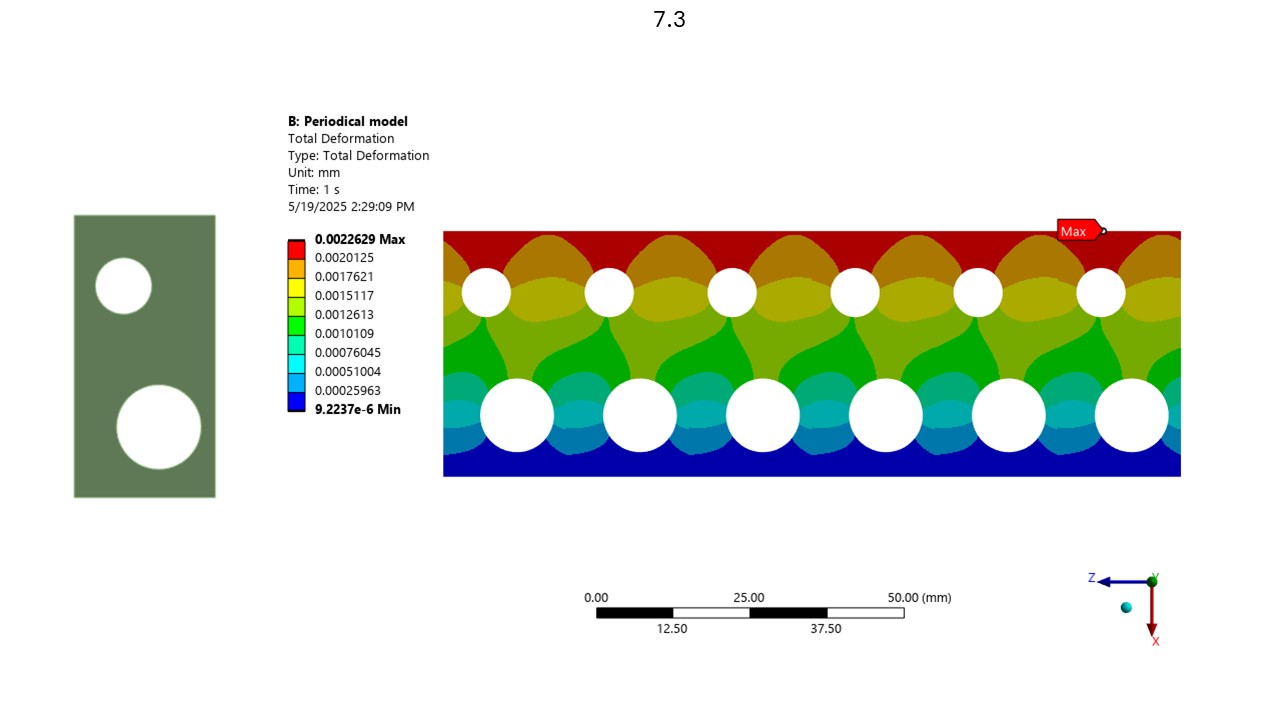
This workshop shows how to set up plane stress simulation of a thin plate, and compare it to the solid model. The plate is only 3mm thick which is small compared to other dimensions. The load is only in it plane. So, plane stress can be used for simulation.
- Split edge and surface to create area for applied force.
- Set up and run plane stress simulation
- Compare with solid model
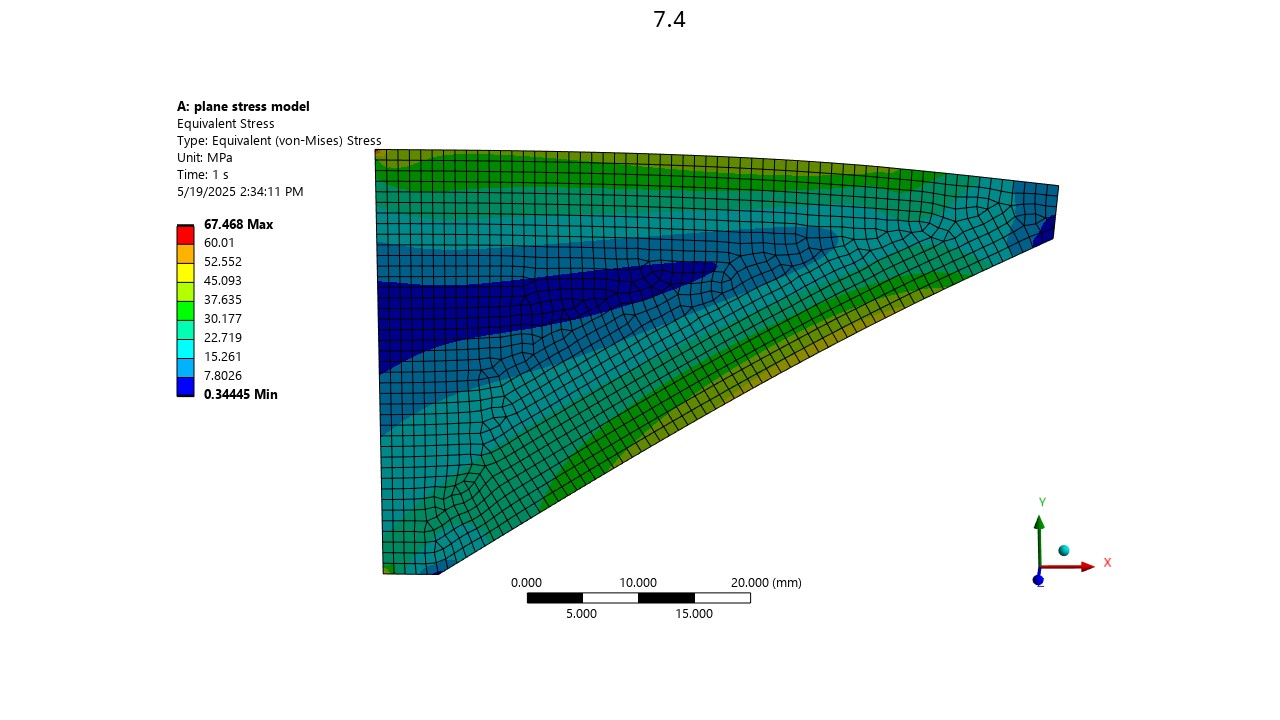
This workshop shows how to set up plane strain simulation of a long pipe under inside pressure, and compare it to the solid model. The pipe length is larger compared to its diameter. So, plane strain can be used for simulation.
- Use weak spring to prevent free body motion
- Use remote boundary condition to prevent free body motion
- Set up and run plane strain simulation
- Set up and run Generalized plane strain simulation
- Create and use cylindrical coordinate system to get directional deformation, normal stress and normal strain of cylindrical body
- Compare with solid model
- Set up parameter set for different lengths of pipe
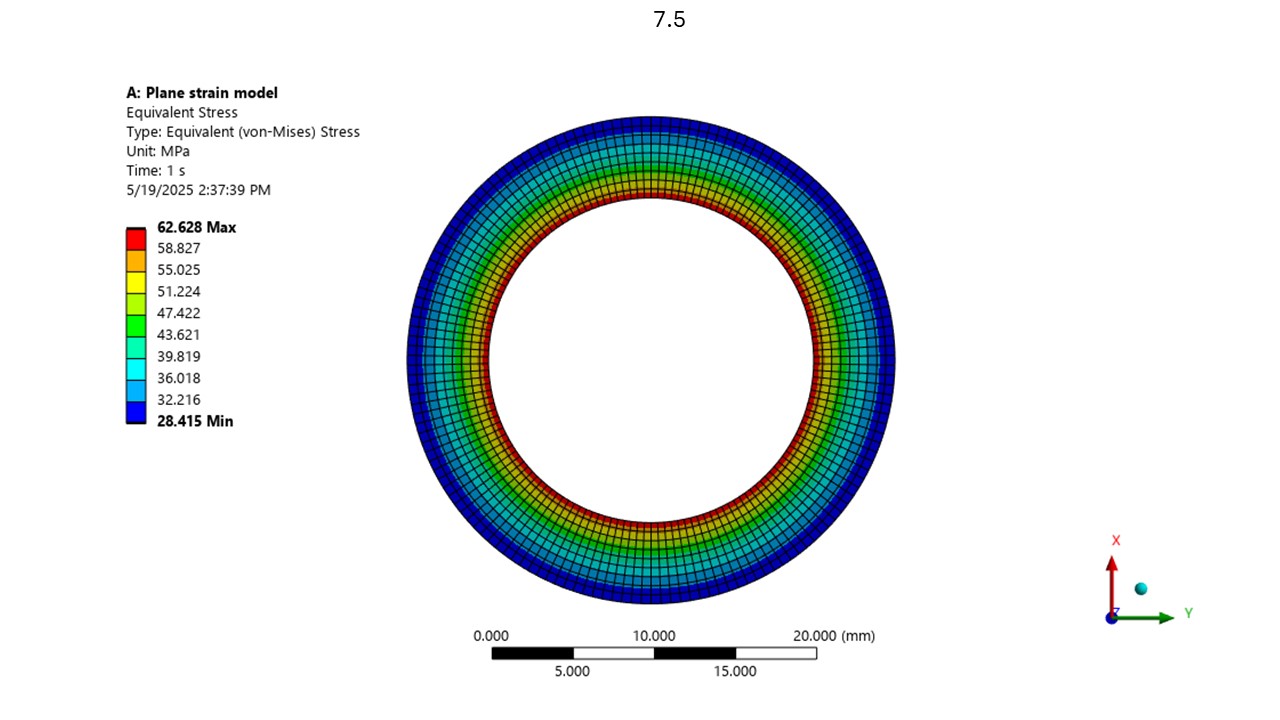
This workshop shows how to set up an axisymmetry simulation of a high pressure vessel under inside pressure.
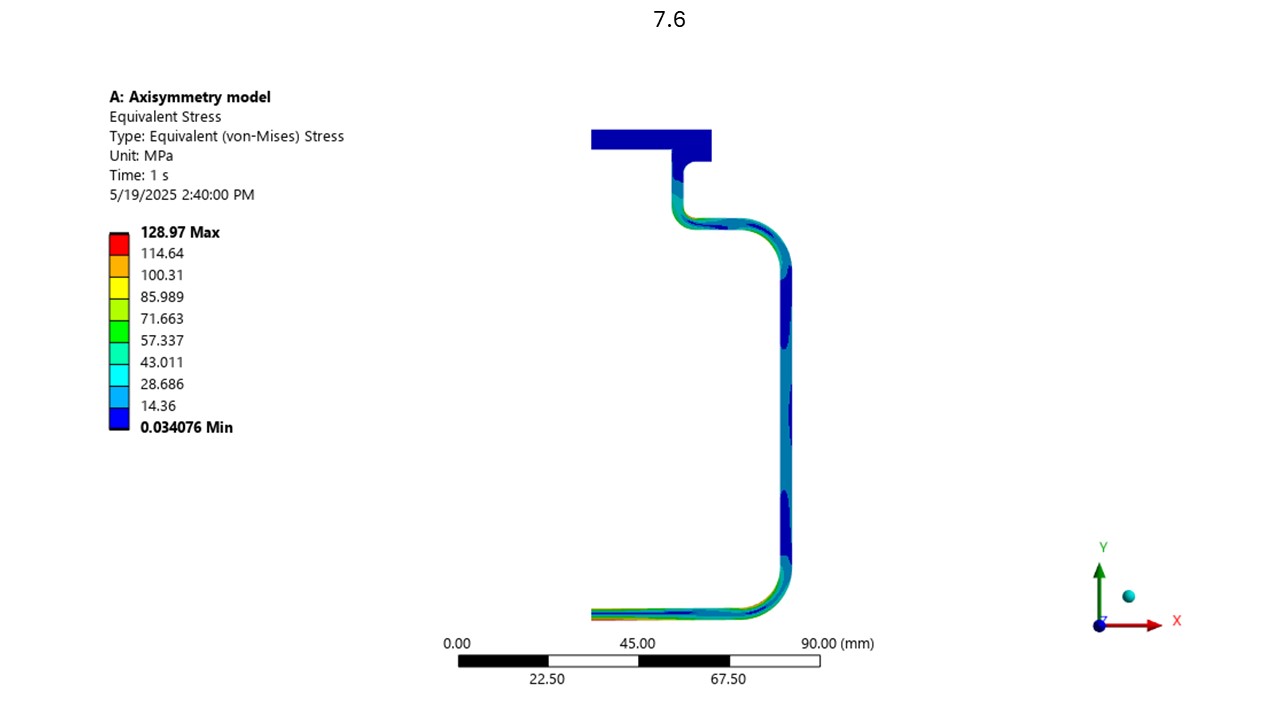
Bài này bao gồm các phương pháp xử lý mô hình hình học, chia lưới, thiết lập liên kết, xuất kết quả các mô hình line body và surface body.
Line body:
- Line Elements
- Geometry
- Beam End Release
- Connections
- Direct Beam Modeling
- Analysis Settings
- Beam Results
- User Defined Results
- Shear and Moment Diagrams
Surface body:
- Shell Elements
- Geometry
- Meshing
- Solid Shell Formulation
- Connections
- Analysis Settings
- Shell Element Results
In this exercise, we will perform a strength analysis of a crane.
Main content:
-Preprocess geometry: Create beams and shells, Share geometry.
-Generate mesh: Mesh for beams, shells and solid; Mesh connection.
-Set up connections: Shell – solid, Shell – beam, Beam – solid.
-Apply loads.
-Evaluate results.
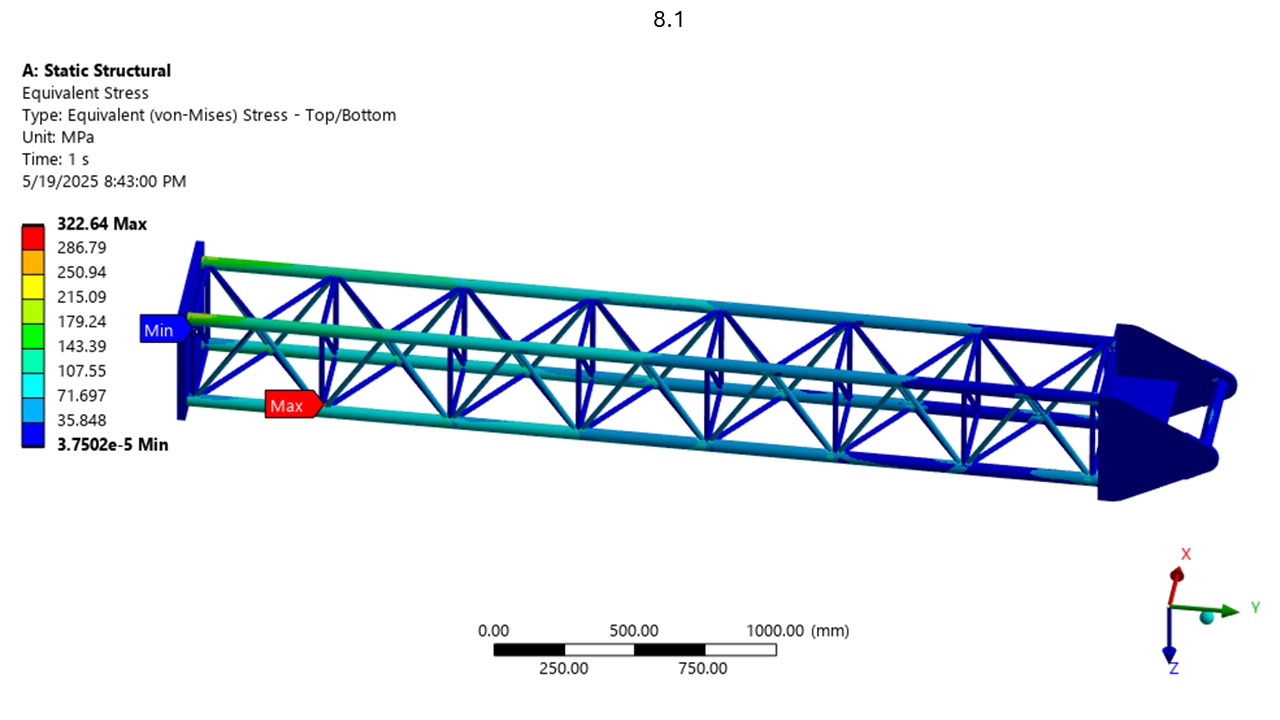
In this exercise, we will learn how to perform a strength analysis of a pressure vessel.
- Preprocess geometry: Create shells from solid plate, share and connect geometry.
- Generate mesh: Mesh of shells, Mesh connection between shells.
- Set up shell – shell connections.
- Apply loads.
- Evaluate results.

- Free vibration analysis: Sử dụng để xác định các đặc tính dao động tự do của kết cấu như natural frequencies và mode shapes.
- Frequency response analysis: Sử dụng để xác định ứng xử của cấu trúc đối với ngoại lực có giá trị là một hàm điều hòa (harmonic force).
In this exercise, we will learn how to simulate a spring mass system.
- Calculate vibration frequency of the system without damping.
- Calculate vibration frequency of the system with damping:
+ using global damping in the analysis setting.
+ using damping of the spring.
+ compare the results.
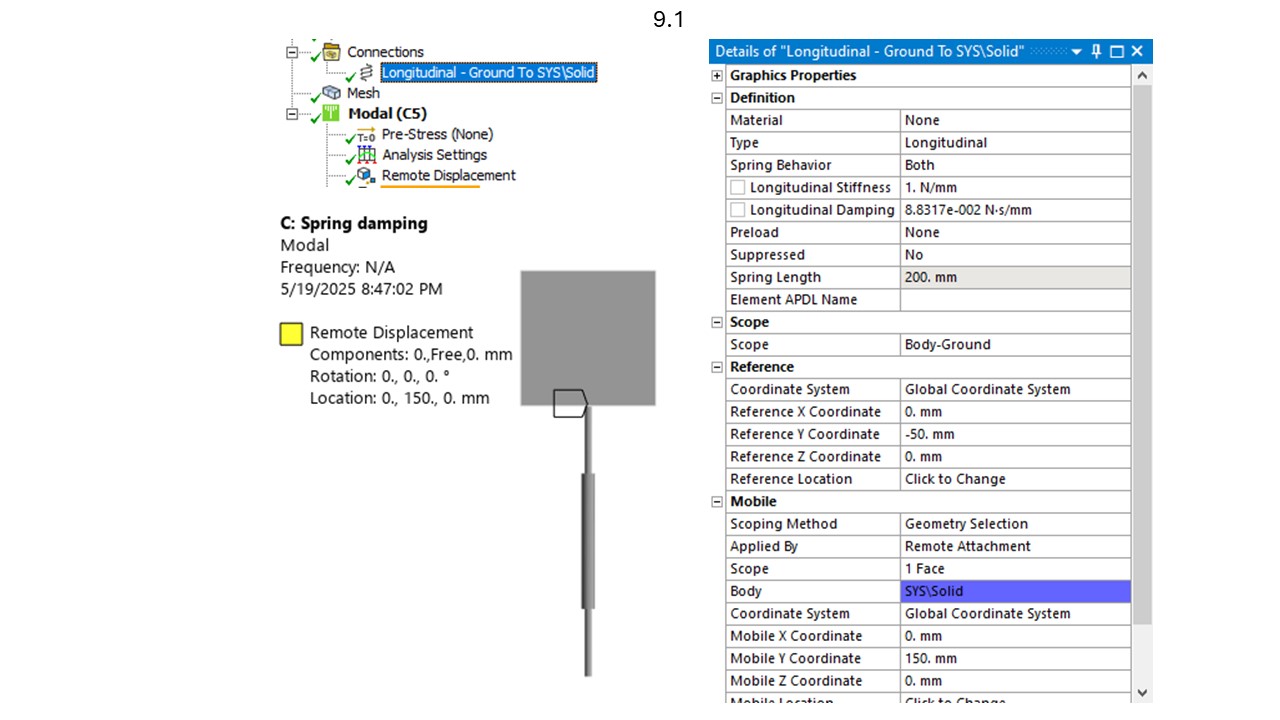
A bridge made of structural steel is subject to a harmonic force of 10000N from a jumping compactor. The frequencies of the compactor ranges from 4Hz to 10Hz.
Calculate the maximum vertical deflection.
Calculate the maximum equivalent stress.
Main content:
- Set up pre-stress conditions in Static structural
- Calculate natural frequencies in Modal Module
- Use Harmonic Response to calculate deflection and stress.
- Compare different damping setting:
- undamped
- constant damping: Damping ratio 0.02.
- frequency-dependent damping: Damping ratio 0.02 at frequency 5Hz; damping ratio 0.03 at frequency 15Hz.
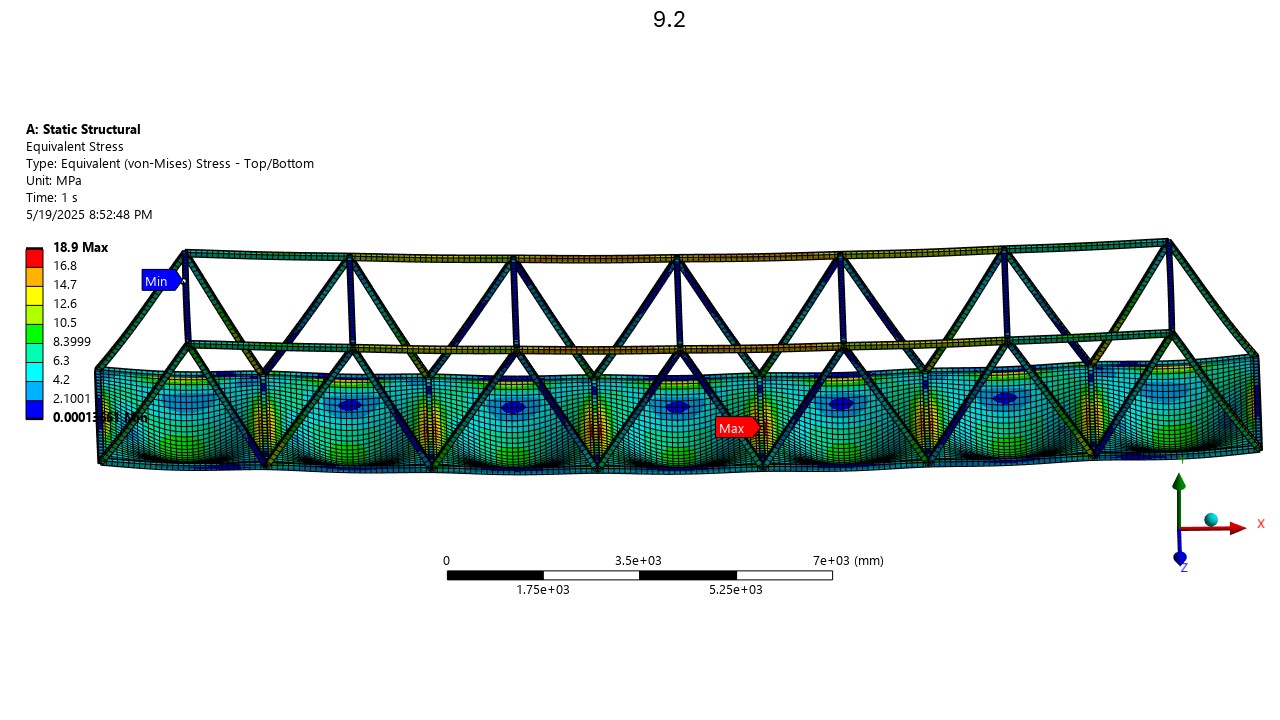
The motor is mounted on the upper frame which is connected to the lower frame by 4 rubber vibration insulators. The motor runs at 6000RPM (round per minute). The the weight of rotor of the motor is 25.3kg and the rotor’s eccentricity is e_0=〖1∗10〗^(-3) m. The motor is connect to a machine on the floor by a belt, the belt tension force is 2000N. Frame is made from structural steel, tensile yield strength 250MPa.
- Calculate the maximum deflection of frame in Horizontal and Vertical direction.
- Evaluate the strength of the frame.
Main content:
- Prepare geometry for simulation: Create sheel boies, share topology, select offset type for shells.
- Calculate vibration frequency of the system in Modal Module
- Using Harmonic Response to analyze the response of the mounting frame when subject to harmonic load.
- Set up material dependent damping in engineering data
- Explain the meaning of participation factor
- Explain resonance
- Calculate max. deflection
- Evaluate strength of frame
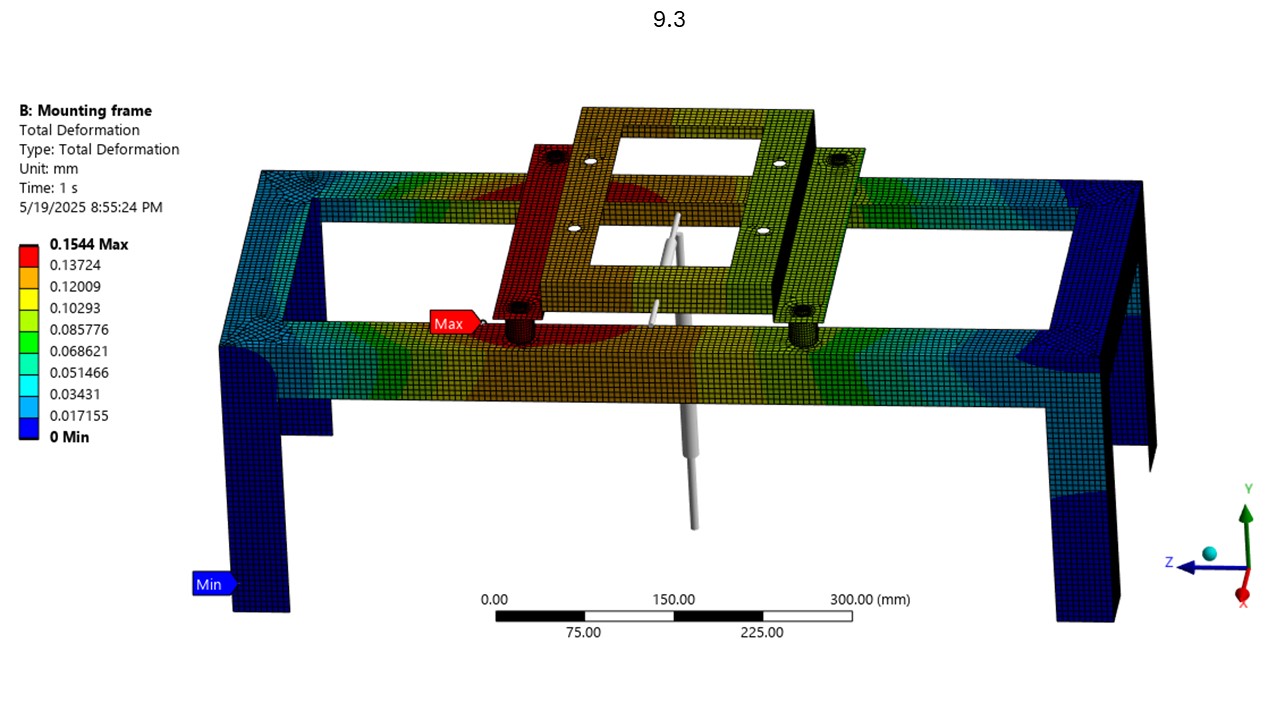
1. Khái niệm các trạng thái ổn định
2. Khái niệm phân tích sự mất ổn định
3. Mất ổn định tuyến tính
4. Mất ổn định phi tuyến tính
Tính toán bằng công thức giải tích và mô phỏng bằng module engaivalue buckling để xác định critical buckling load trong phương mặt phẳng OYZ của thanh beam có tiến diện là hình chữ nhật rỗng.
Thông số như sau: L = 1000mm; h = 10mm; w = 20mm; t = 0.5mm.
Cơ tính vật liệu thép: Density: 7850kgm^-3; E = 2E+11; poisson’s ratio: 0.3; tensile yield strength = 2.5E+8Pa.
Plasticity: Bilinear isotropic hardening: Targent modulus = 1E+8Pa.
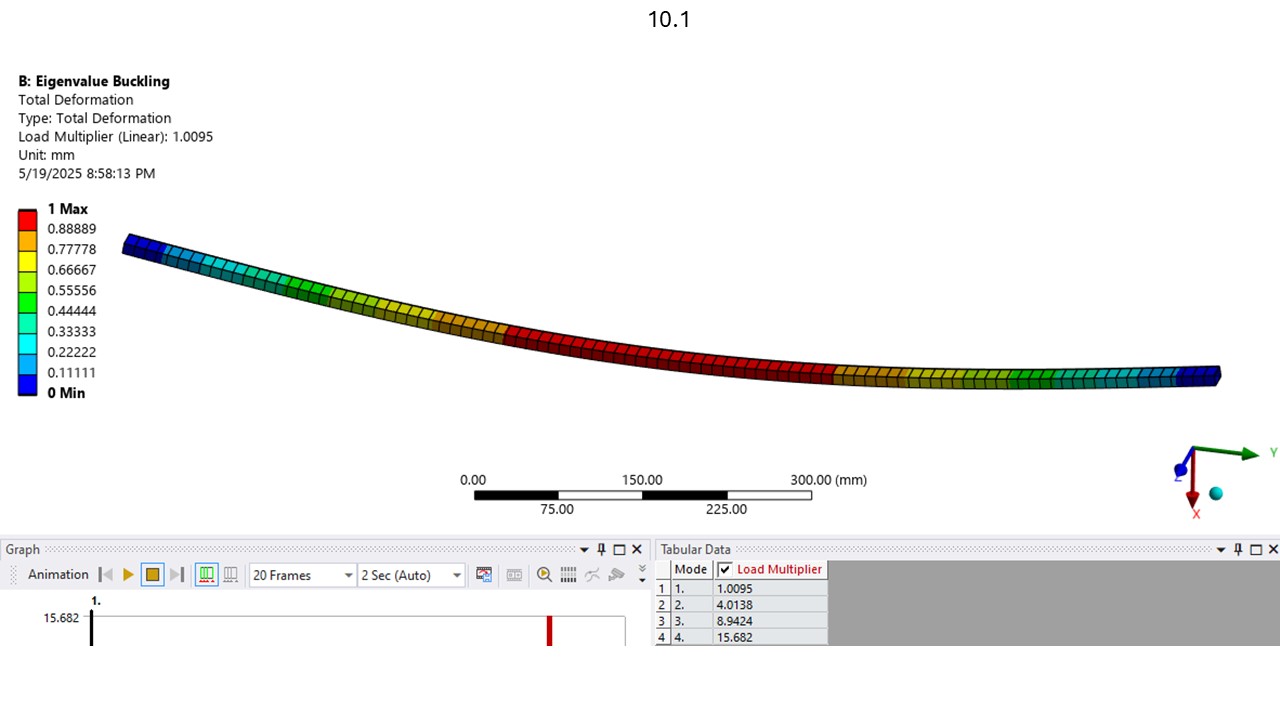
Bài thực hành trước đã tính toán và mô phỏng linear buckling của thanh beam, 1st buckling shape và Critical buckling shape 1009.5N làm cơ sở để chúng ta thiết lập mô hình nonlinear buckling analysis.
Thông số thanh beam có tiến diện là hình chữ nhật rỗng: L = 1000mm; h = 10mm; w = 20mm; t = 0.5mm.
Cơ tính vật liệu thép: Density: 7850kgm^-3; E = 2E+11; poisson’s ratio: 0.3;
Plasticity: Bilinear isotropic hardening: Targent modulus = 1E+8Pa.
Bài tập này sẽ thực hiện với các thông số đầu vào khác nhau, điều kiện đặt tải khác nhau, sau đó so sánh với nhau và so sánh với linear buckling analysis. Để tạo ra geometrical imperfection cho thanh beam, một lực rất nhỏ được đặt lên vị trí giữa thanh để tạo ra độ võng ban đầu.
Case 1: Tensile yield strength = 2.5E+8Pa. Điều kiện đặt tải lực = 3000N (gấp 3 lần so với kết quả linear buckling)
Case 2: Tensile yield strength = 2.5E+8Pa. Điều kiện đặt tải remote displacement
Case 3: Tensile yield strength = 1E+8Pa. Điều kiện đặt tải lực = 3000N
Case 4: Tensile yield strength = 5E+8Pa. Điều kiện đặt tải lực = 3000N
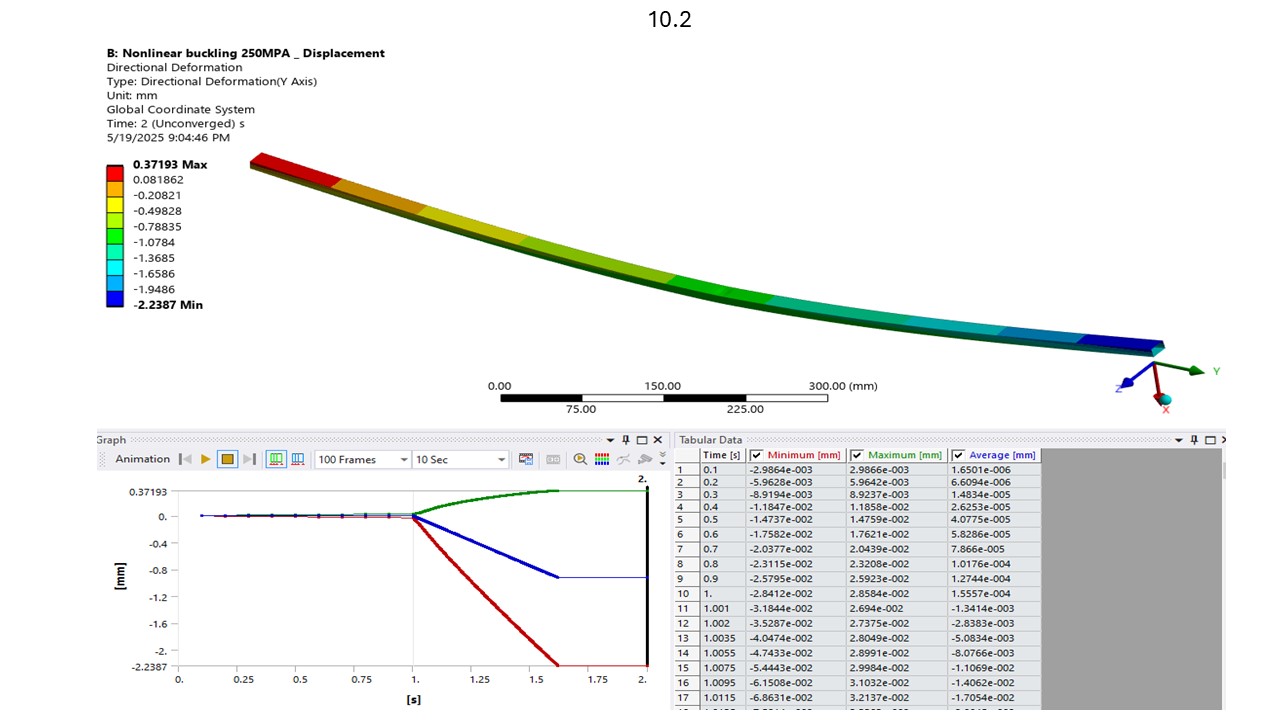
Cable tray được sử dụng để chứa và nâng đường dây điện trong các công trình xây dựng. Trong thực tế, cable tray được đỡ 2 đầu và chịu tác dụng của trọng lượng bản thân và trọng lượng của dây điện tác dụng lên các thanh ngang ở phía dưới. Tính tải trọng giới hạn mà cable tray có thể chịu được. Đối với kết cấu từ thép tấm mỏng như cable tray, tải trọng giới hạn thường là tải trọng ổn định giới hạn (critical buckling load), vì vậy module static structural được sử dụng để mô phỏng nonlinear buckling analysis.
Kết quả bài mô phỏng Linear Buckling Analysis: Critical Buckling Load 14980N và 1st mode shape như hình bên dưới, là cơ sở để thực hiện Nonlinear Buckling analysis.
Thông số hình học của cable tray được thể hiện trong mô hình.
Cơ tính vật liệu thép: Density: 7850kgm^-3; E = 2E+11; poisson’s ratio: 0.3;
Plasticity: Bilinear isotropic hardening: Targent modulus = 1E+8Pa, Yield strength = 2.5E8Pa.
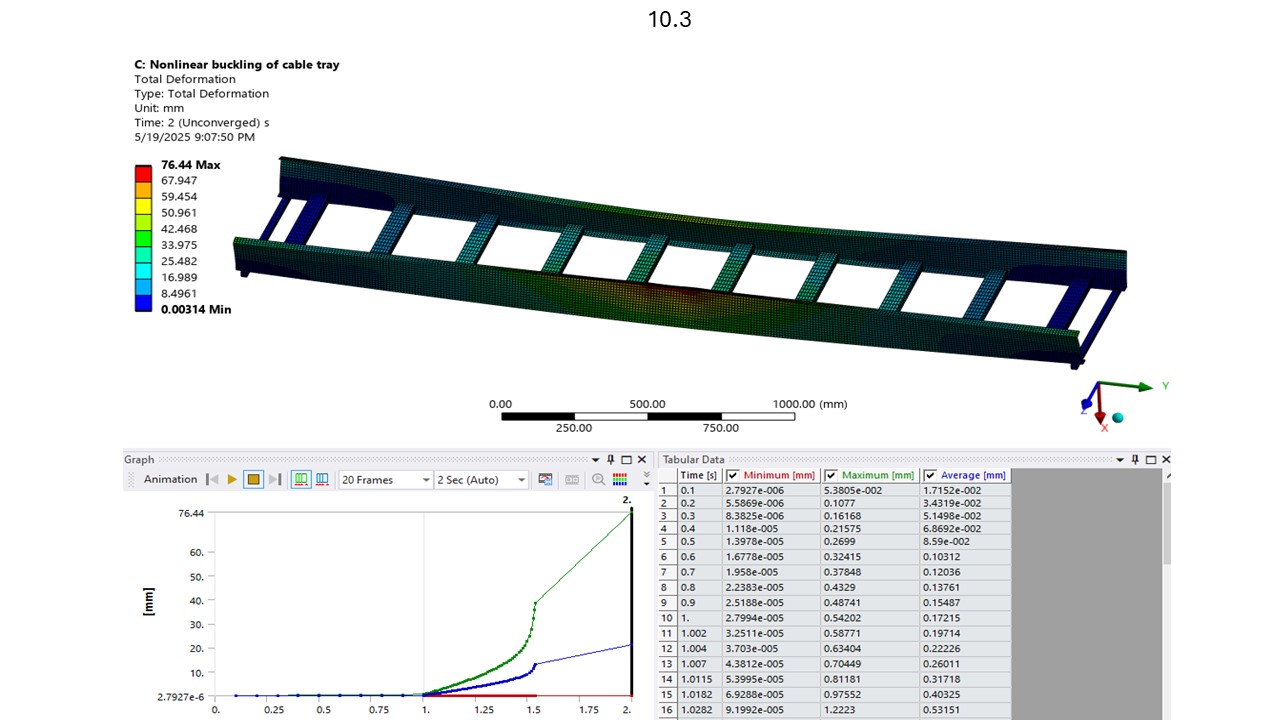
- Transient Response analysis phân tích động lực học của kết cấu chịu tác dụng của lực biến đổi theo thời gian.
- Transient response analysis bao gồm ảnh hưởng của inertia (quán tính) và/hoặc ảnh hưởng của giảm chấn (damping).
- Bao gồm các loại ảnh hưởng của các yếu tố phi tuyến tính như tiếp xúc, biến dạng dẻo của vật liệu, biến dạng lớn hình học, vật liệu siêu đàn hồi…
- Kết quả đầu ra là các thông số phụ thuộc vào thời gian như sau: biến dạng, vận tốc, gia tốc, ứng suất, biến dạng tỉ lệ, lực, mô men.
- Transient Structural is an Implicit Solver of Ansys used to solve dynamic problems that involve small nonlinearity in contacts, materials, geometry and when large steps can be used.
- Mô hình có thể bao gồm: Flexible bodies (chi tiết có thể biến dạng) and rigid bodies (chi tiết cứng tuyệt đối).
A beam is fixed at one end and one end is free.
- Calculate natural frequency of the beam.
- Perform transient response of the beam using Transient Structural.
- without damping.
- with damping.
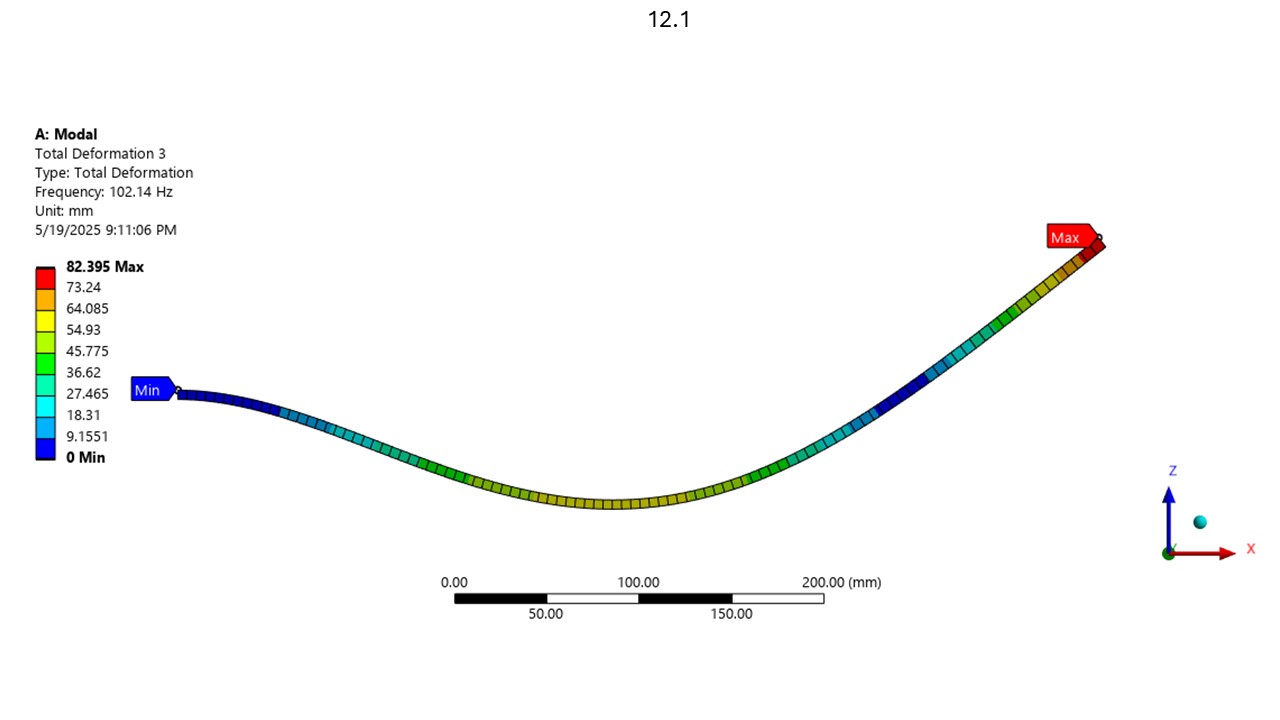
A frame is fixed at four legs.
- Calculate natural frequency of the frame.
- Perform transient response of the frame after the ball falling down.
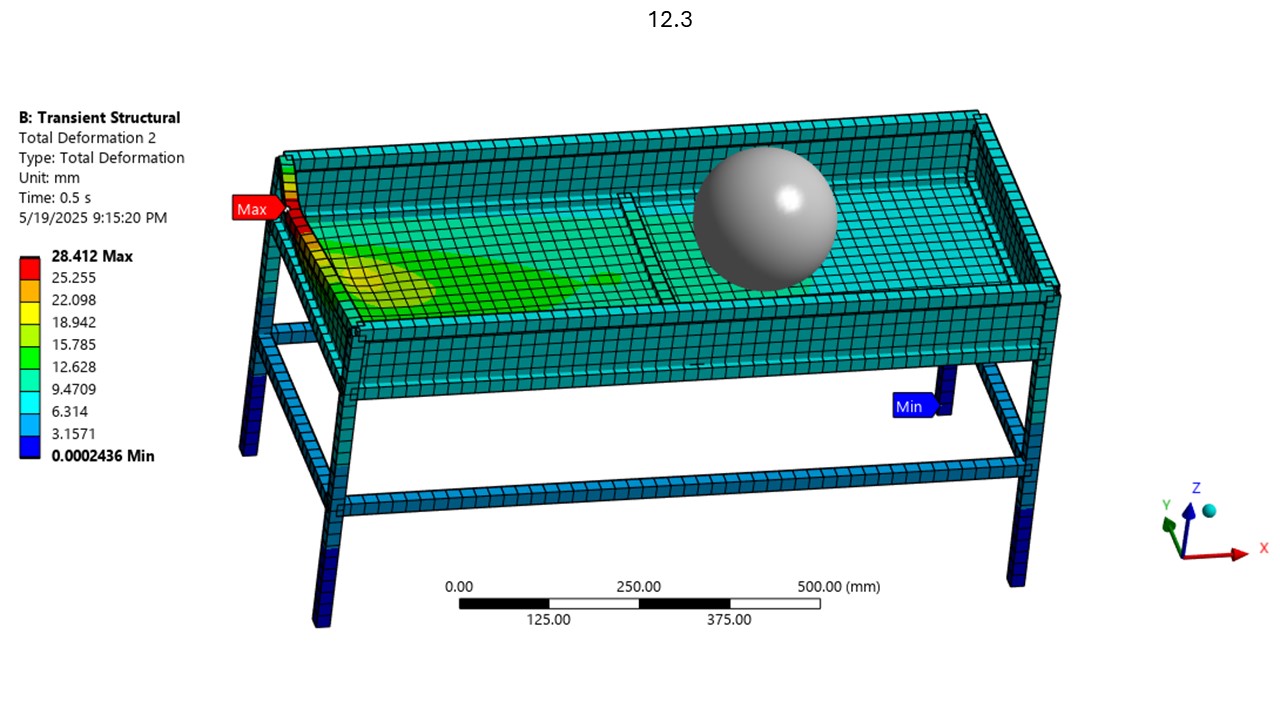
This workshop perform transient response of a steel bridge when a car run over it.
- Set up materials for steel and rubber, including damping properties.
- Set up velocity for a moving car.
- Perform transient response of the bridge.
- Evaluate deformation
- Evaluate stress of bridge
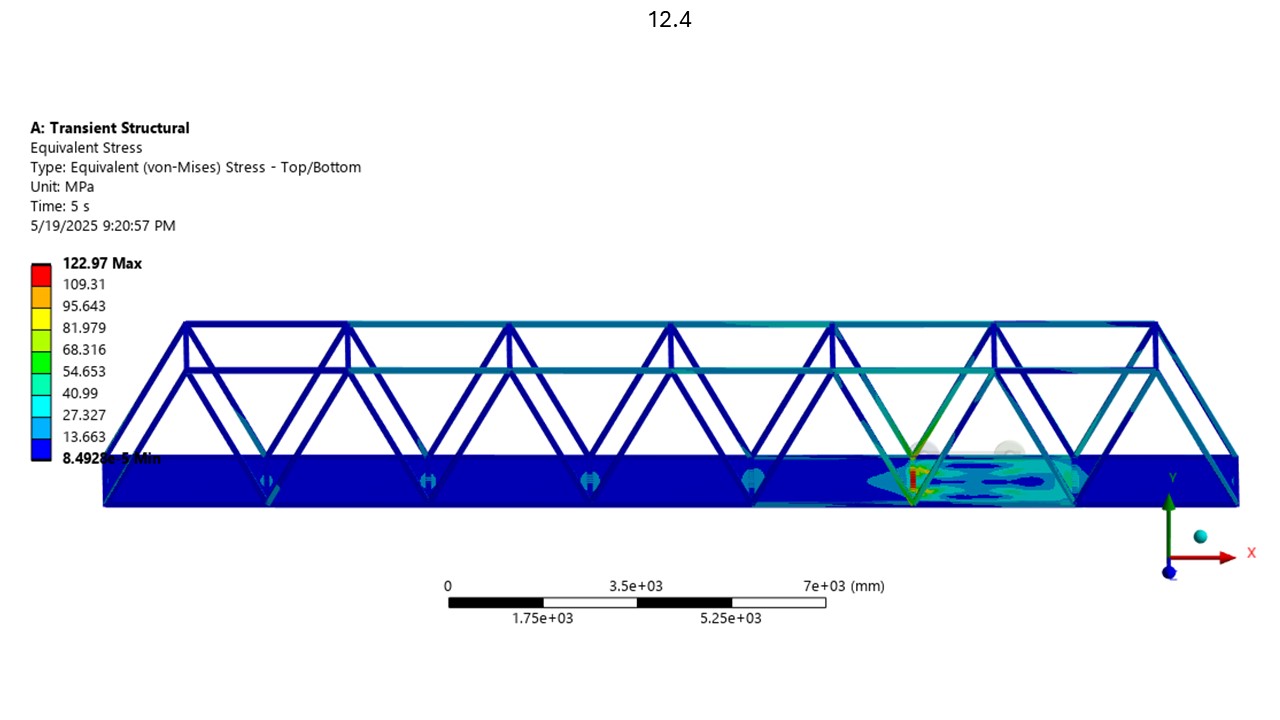
This workshop performs how a quick return mechanism works using Rigid Dynamics module and Transient Structural module.
- Set up Rigid multi-body system and evaluate kinematic results in Rigid Dynamics.
- Set up Rigid-Flexible multi-body system and evaluate stress and kinematics in Transient Structural.
- Set up properties (stiffness and damping) for joints between components.
- Set up properties (stiffness and damping) for spring.
- Set up properties (restitution factor and stabilization damping) for contacts between components.
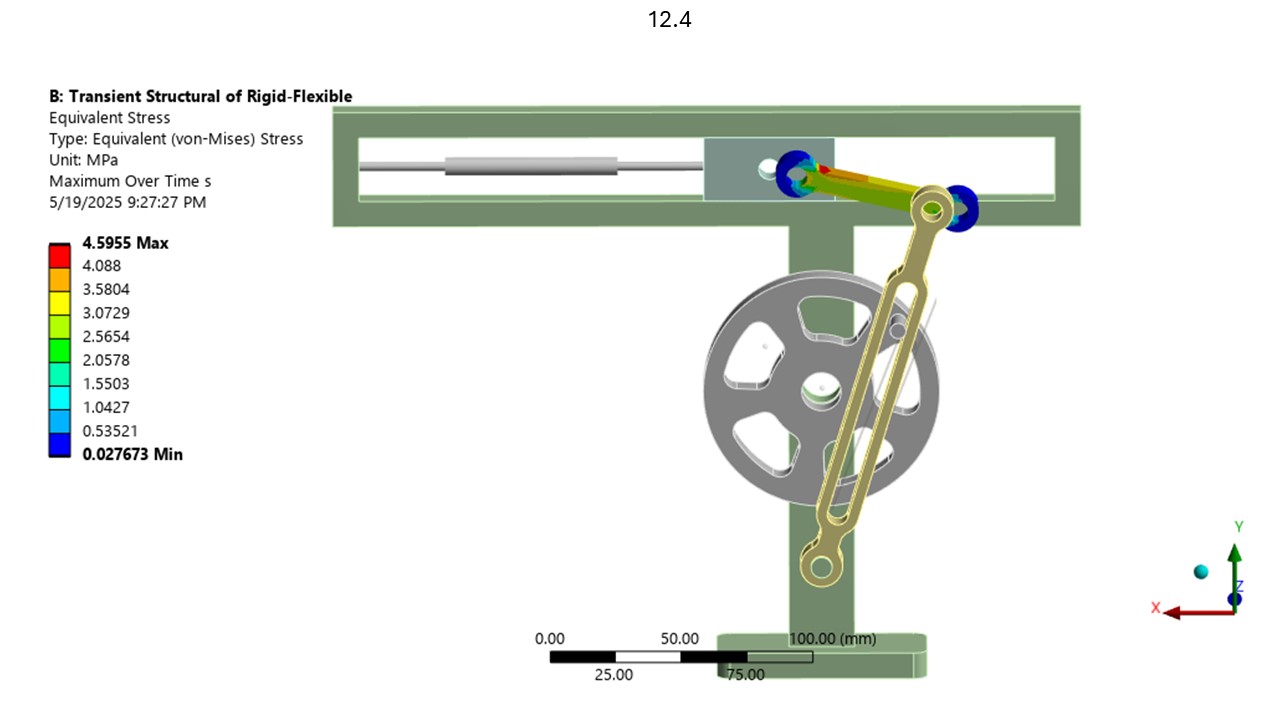
Use explicit dynamics when calculating highly complex and nonlinear problems involving rapid changes such as deformation or failure of material, such as:
- Short-duration, complex or changing-body interactions (contact)
- Quasi-static loads (low strain rates)
- High-speed and hypervelocity impacts
- Severe loadings resulting in large material deformation
- Material failure
- Penetration mechanics
- Manufacturing processes with nonlinear plastic response
- Drop-test simulation
- Explosive loading
- Explosive forming
- Blast-structure interactions
A water bottle drops on a concrete floor
- Set up hardening plasticity for steel
- Set up interaction between bottle and concrete
- Check the running timestep
- Use mass-scaling to save running time
- Check mass-scaling mass
- Compare results
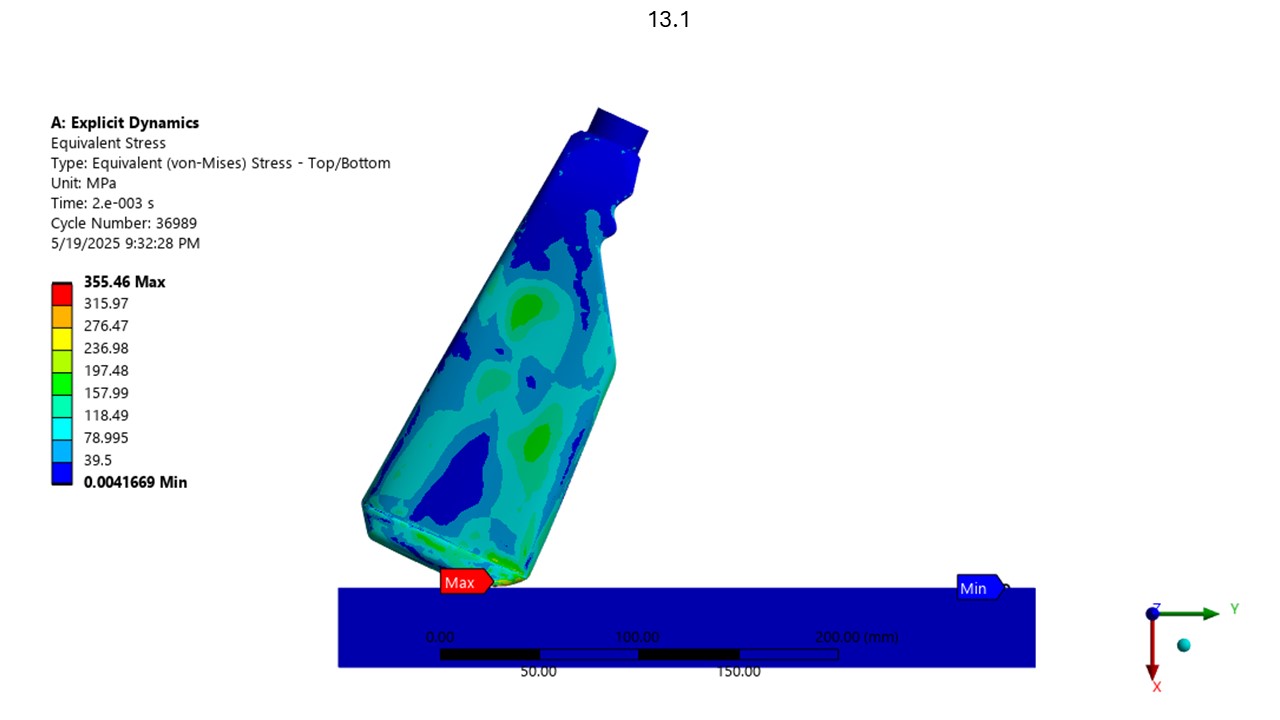
This show how to perform a metal sheel stamping process.
- Set up Johnson-cook plasticity model and Johnson-cook failure model for steel SAE 1045.
- Prepare the 3D model for Sweep mesh method.
- Set up body interaction with friction between components.
- Set up variations fro erosion control and compare results.
- Compare punch force of different punch velocity.
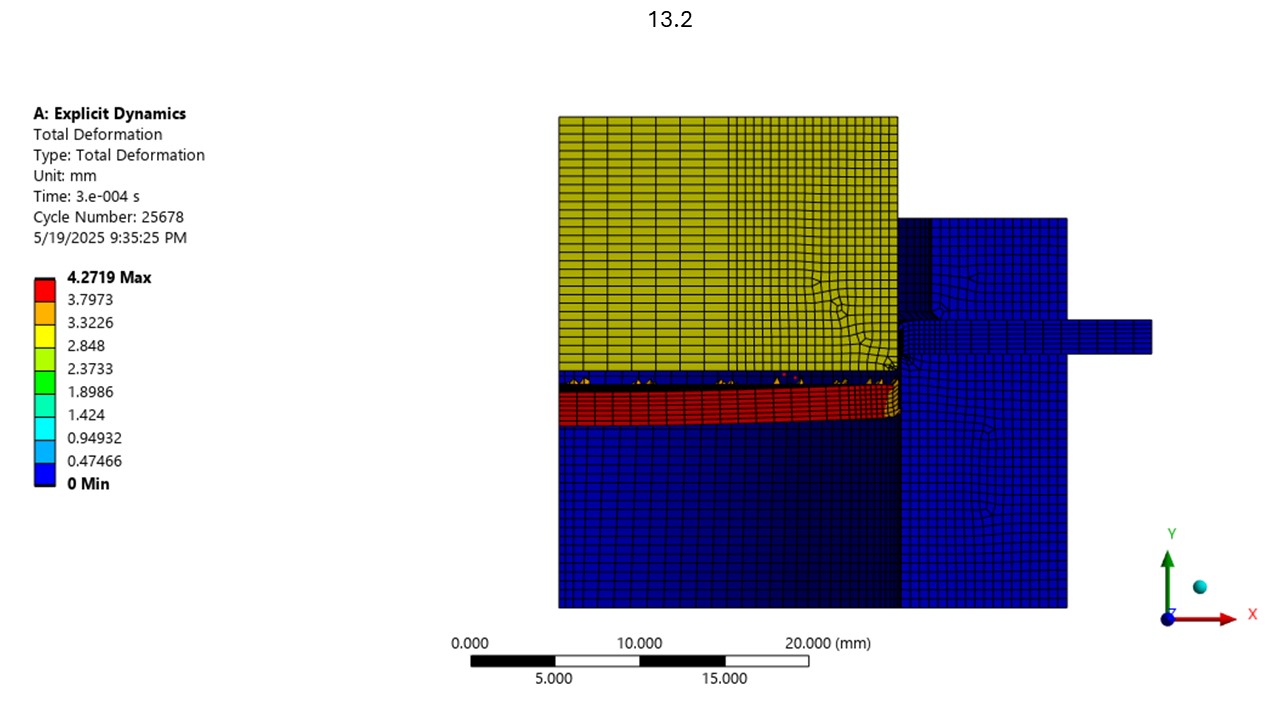
This shows how a bullet penetrates steel plates.
- Set up Johnson-cook plasticity model and Johnson-cook failure model for steel SAE 1045.
- Set up Johnson-cook plasticity model and Johnson-cook failure model for steel SAE 1020.
- Set up body interaction with friction between components.
- Set up variations for erosion control and compare results.
- Use erosion controls to increase timestep.
- Export and import existing material model.
- Perform parametric study of input parameters and output results.
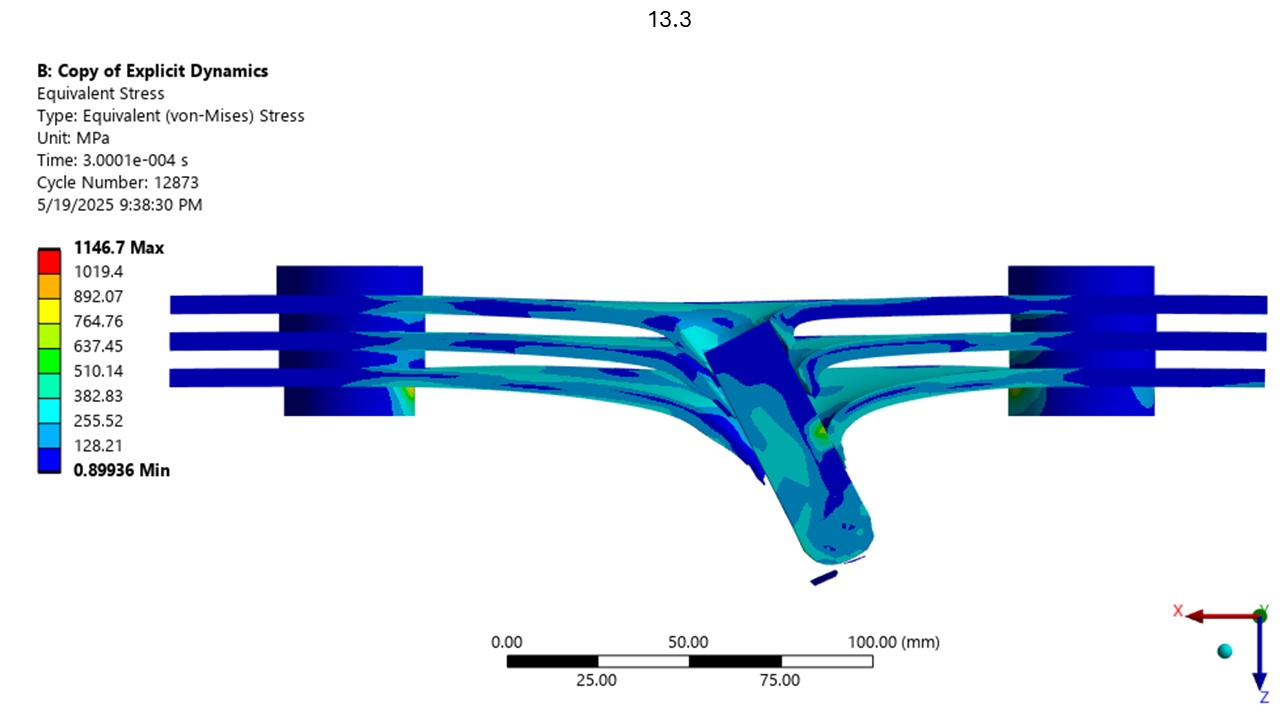
This exercise will simulate the dynamic 3-point bending process of reinforced concrete bar.
- Building a nonlinear material model for concrete, conc-35Mpa for explicit dynamics.
- Set up body interation between reinforced bars and concrete.
- Set up nonlinear steel with hardening plasticity.
- Set up boundary conditions to perform the bending process.
- Set up and compare results of different variations of erosion controls.
- Set up and run a quasi-static bending process.
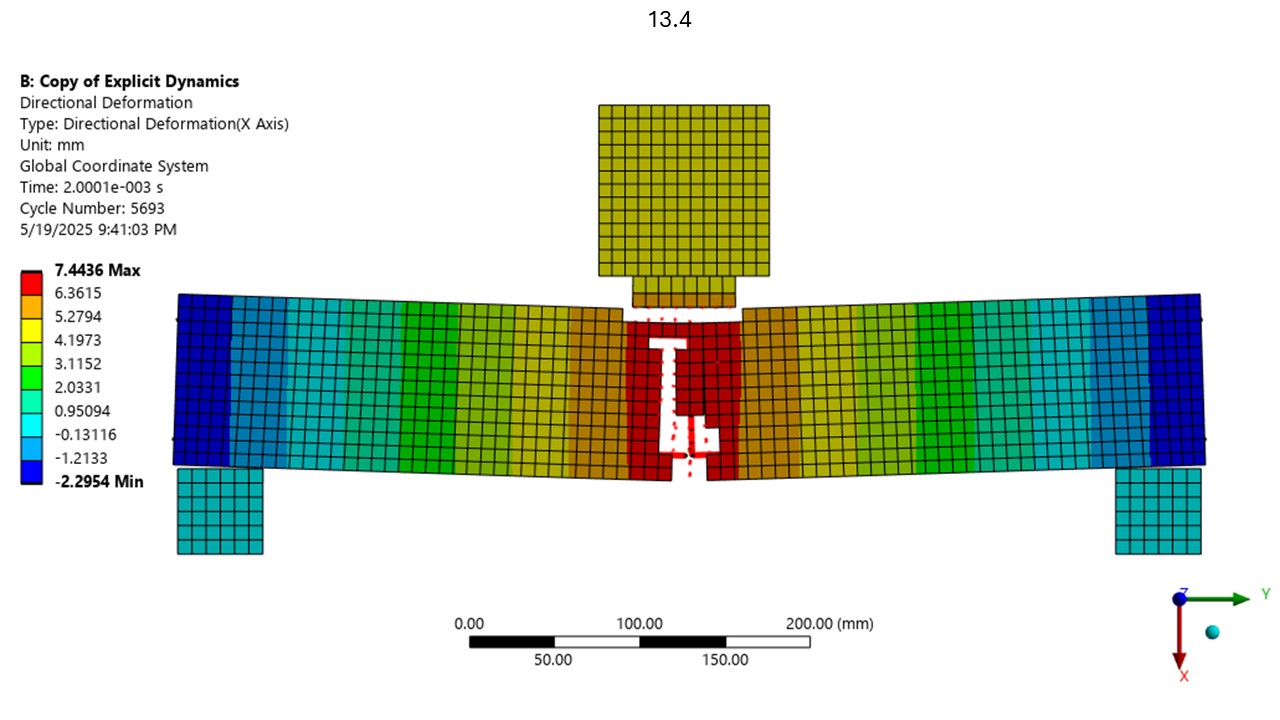
-
Fundamentals of heat transfer using simulations with basic theoretical explanation
-
How to model and analyse thermal applications using Ansys Thermal and interpret the results from theoretical solutions
-
Analysis of different modes of heat transfer like conduction, convection and radiation
-
Simulations using steady state and transient methods
-
Coupled analysis like thermo-structural analysis
A finned tube consists of an inner tube made of stainless steel and an outer tube with fins made of aluminum alloy. The diameter d = 0.02[m], the length D = 5[m].
Hot water flows inside at velocity ω = 5[m/s], the outside is natural stationary air.
The bulk temperature of water is 90◦C. The bulk temperature of outside air is 30◦C.
a) Calculate film coefficient (heat transfer coefficient) of the water.
b) Perform thermal analysis to determine the temperature distribution inside the tube.
c) Calculate thermal conductance of contact between surfaces.
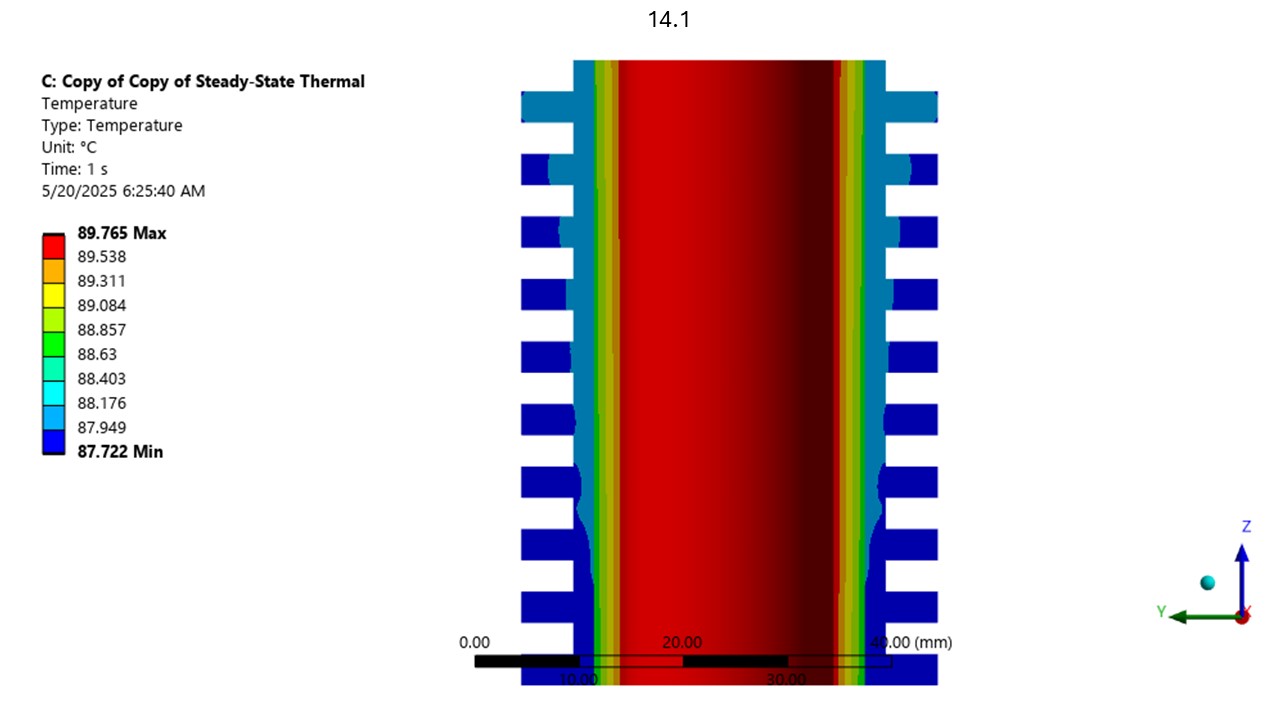
This workshop performs a thermal analysis of an electric bulb.
- Set up heat flow.
- Set up convection.
- Set up radiation of filament and other parts: Radiation to ambient and radiation from surface to surface.
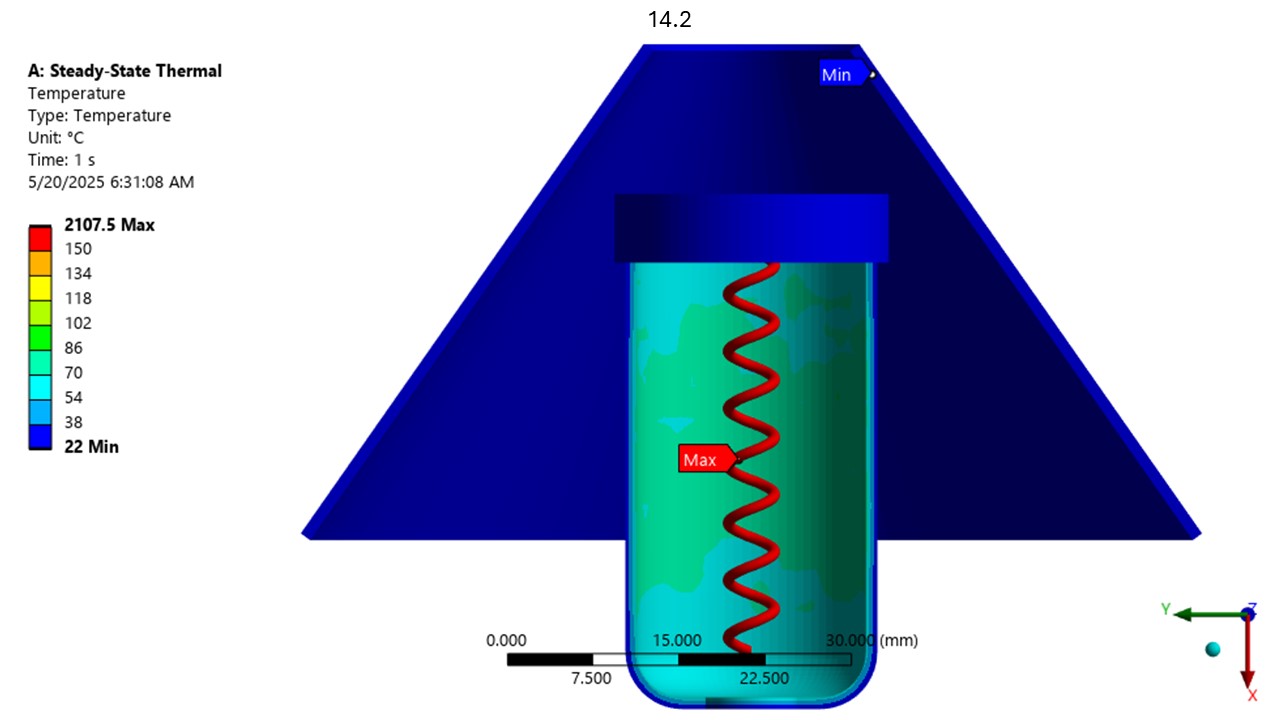
This workshop performs transient weld process.
- Add welding materials.
- Insert name selection using worksheet.
- Set up element birth and dead.
- Set up convection and radiation.
- Set up temperature-dependent thermal properties according to EN 1993-1-2: 2005.
- Get temperature distribution during welding process.

- This workshop shows how to calculate thermal stress of components during operation of a finned tube with hot water flowing inside.
- The temperature distribution is imported from the file of the workshop “Thermal Analysis of Finned Tube”
- Calculate thermal stress induced by temperature during operation of finned tube.
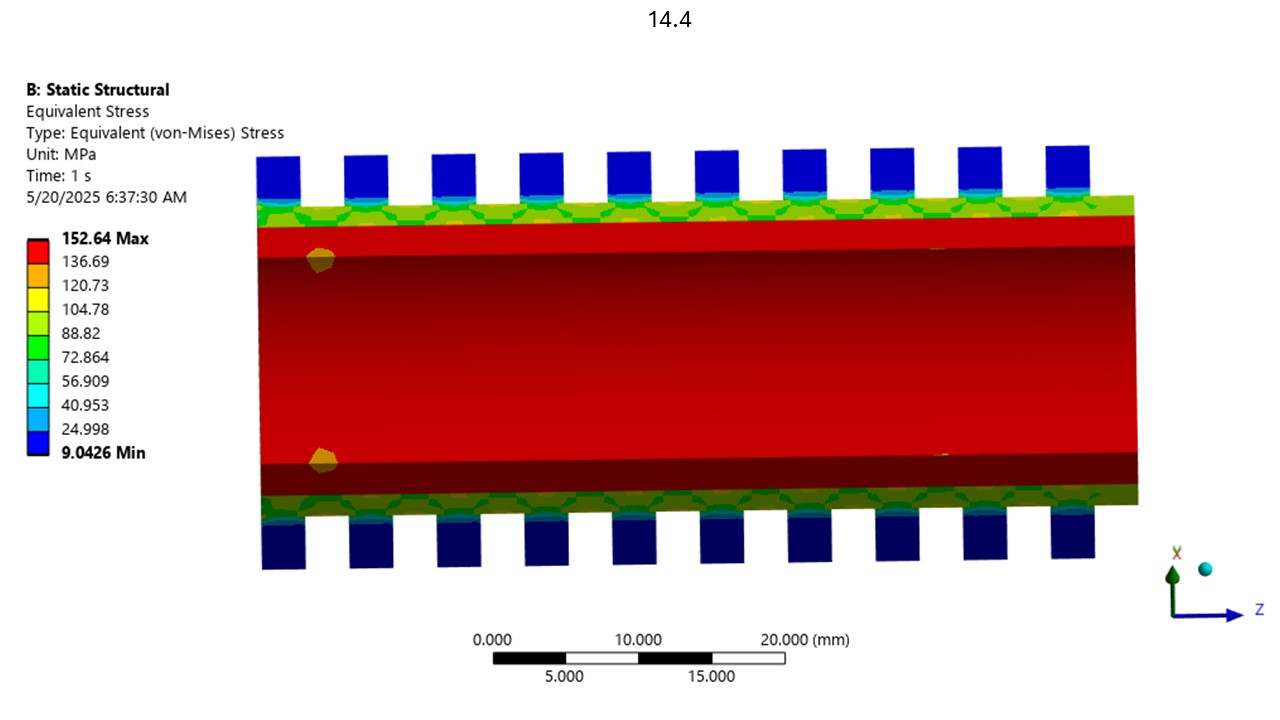
This workshop shows how to calculate residual welding stress of components after welding.
- Set up non-linear material model with bilinear plasticity
- Set up initial environment temperature.
- Set up thermal conditions for weld fillet.
- Extract deformation, residual stress and strain.
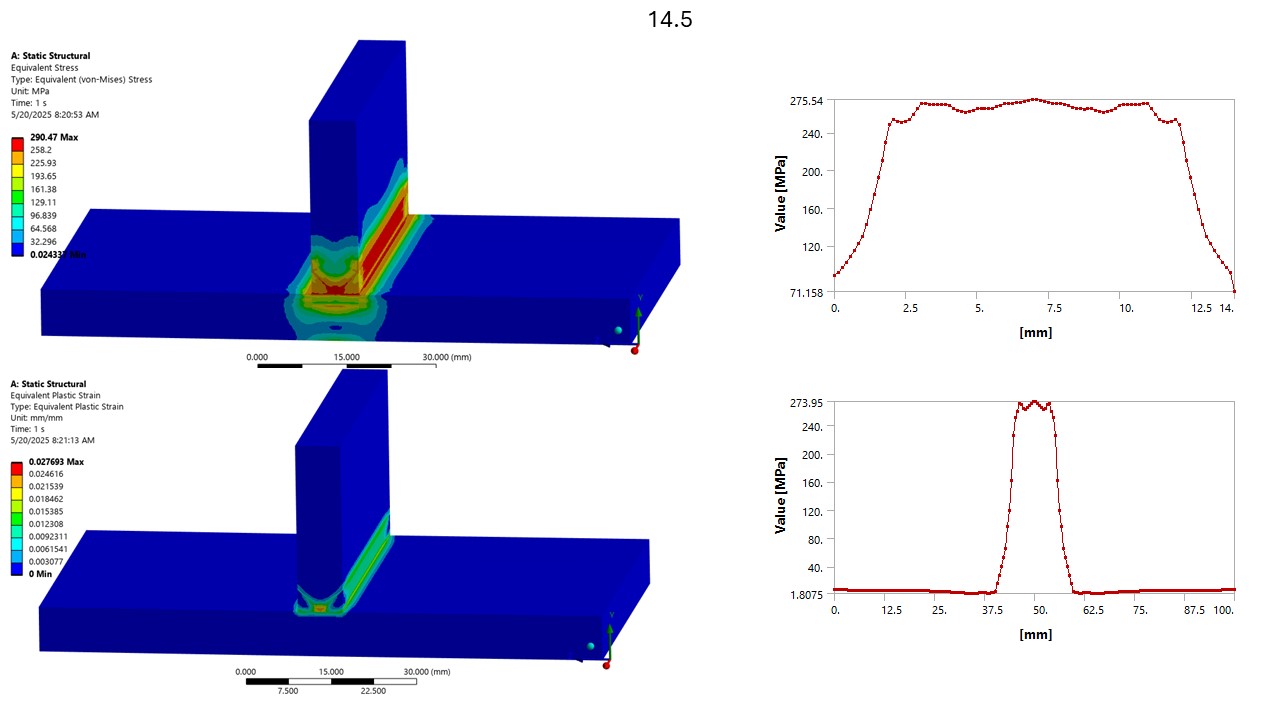
Thời lượng khóa học: 100h
- Học lý thuyết trực tiếp với giảng viên 8 buổi: 24h.
- Chữa bài tập trực tiếp với giảng viên 8 buổi: 16h.
- Làm 50 bài tập thực hành: 60h.
HÌNH THỨC HỌC
- Học Online Trực tuyến
- Học theo nhóm
- Đào tạo theo yêu cầu cho doanh nghiệp
HỌC PHÍ
- Sinh viên: 4.5tr
- Thạc Sĩ: 5tr
- Người đi làm: 5.5tr
- Đăng ký nhóm 2 người, giảm 500k cho mỗi người
- Đăng ký nhóm 3 người trở lên, giảm 1000k cho mỗi người



